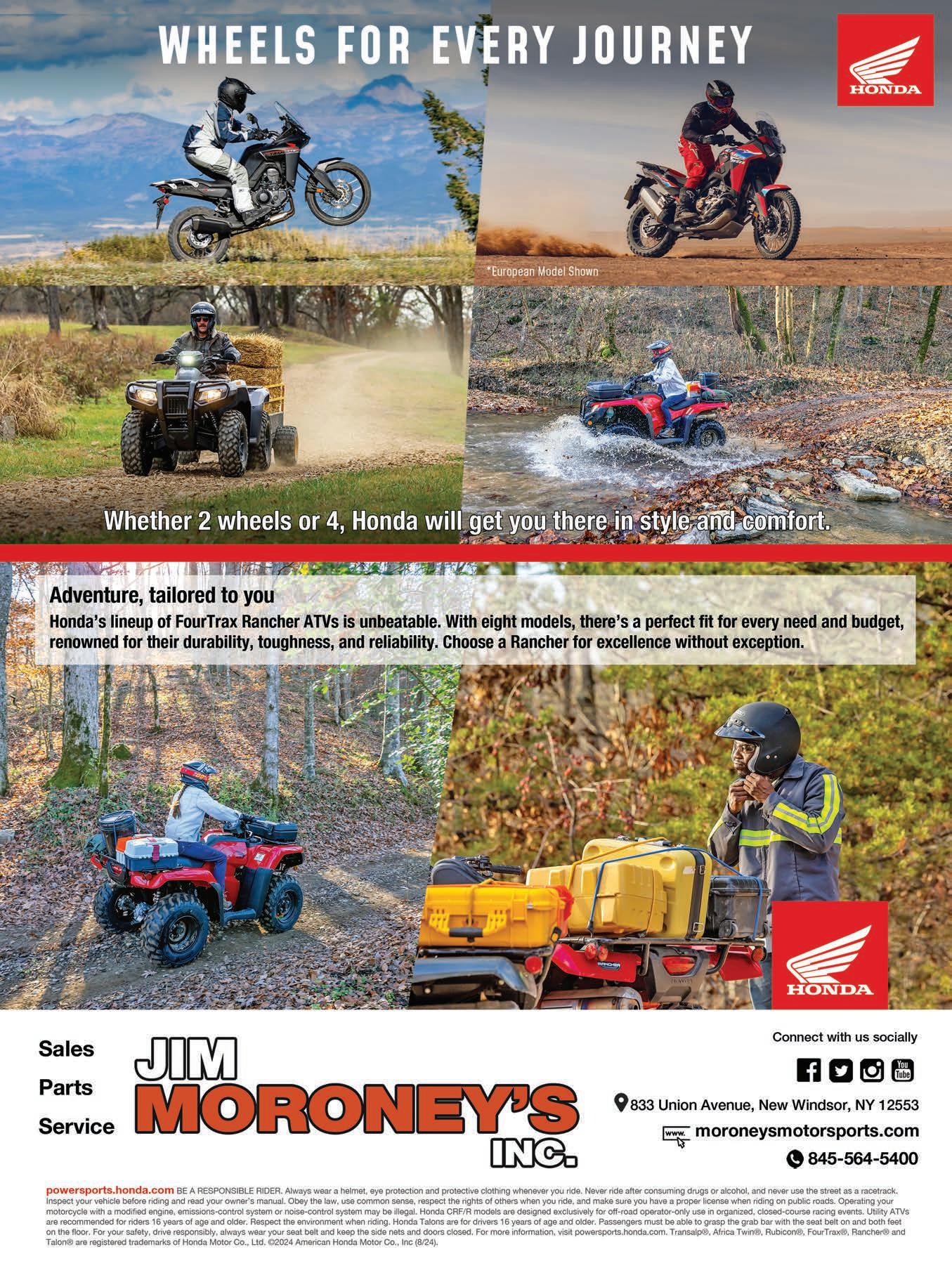









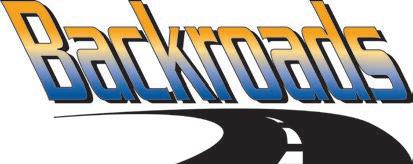



(ISSN 1087-2088) is published monthly by BACKROADS™, Inc. 2024. All rights reserved. BACKROADS™ may not be reproduced in any manner without specific written consent from the publisher. BACKROADS™ welcomes and encourages submissions (text and photos) and suggestions. Include phone number with submissions. BACKROADS™ will only return material with enclosed sufficient postage. The written articles and opinions printed in BACKROADS™ are not necessarily those of the publisher and should not be considered an endorsement. The Rip &Rides® published are ridden on the sole responsibility of the rider. BACKROADS™ is not responsible for the conditions of the public roadways traversed. Please respect the environment, read your owner’s manual and wear proper protective gear and helmet. Ride within your limits, not over them.



Get PlanninG. Get GoinG.
Things usually tend to work the same way here at Backroads Central.
I have my job – a series of tasks and chores - that has been carried out for more than three decades, and seems more and more like an enjoyable – fairly stress-free very long retirement, and almost routine.
Sometimes we can run into a time when, to me, the boot is on the other foot.
Shira is awesome at what she does, art, production, color match-ups… basically being the artsy kid that her parents had hoped she’d be. It never was to include writing a monthly column, although her Inside Scoop seems to be easier for her than her Whatchathinkin page. I think she named it that when I asked her to start writing something for every month.
More a question, not a statement. Me? I never seem to be without something to say. Much to my detriment.
Until this month, it seems that the boot is on the other foot this day.
With most things in life, it is always good to have a plan, but if all you get is “crickets” coming your way – it is still best to get going - sometimes you can figure out the journey – whether writing or riding - but you just need to get on the road first.
Rolling out of your driveway is the beginning of every trip.
More times than I can remember I have ended a day by typing the very beginning of a travel piece about a museum, restaurant, or just some thoughts by simply starting a blank word.doc, knowing that the next day it will be the first thing I see on my computer – and it will get done.
So here I am dribbling down the court with just an idea of where I want to go – but I am going. Wait, okay, I did just take a half hour to try to nail down a new Hermanos Gutierrez tune on guitar; very spaghetti western – and while at it, that got me thinking we’d be heading south and west, in a week or so, to attend the Barber Vintage Festival in Alabama.
Ideas began to percolate. It was time to start planning.
Maps were pulled out - getting the feel for where we’d be, and where we’d need to get to; and equally important what might be out there I didn’t know about.
We are often asked how we find some of the places we do.
When we started there were these things called books. These worked like computer, but were made from cellulose pulp –basically wood; not over 30 different minerals which are mined and extracted from the earth and made into a computer by sorcery.





Many of us use them still.
But in these post-Milli Vanilli days there are several websites that we frequent – you should too. Atlas Obscura, Only in Your State, and O’Life’s beloved Roadside America have done much of the leg work for us and have a seemingly unlimited supply of odd, cool, and very interesting places to visit.
Start scouring the region for places of interest and wonder before you start planning your route. Just because we are putting together a plan, we are never locked into it. Be willing to be flexible, and it will make your ride that much more fun with less stress. Like life, a good journey will have detours – some good, some bad.
How many times have you been detoured only to find a great vista, or a smoking few miles of asphalt?
I keep my eyes peeled, and my close riding friends know that I will slow for Historical Markers (someone thought enough to create it and put it up), odd roadside discoveries, and if I spy anything of interest, I stop.
If I find something cool, I share it - sometimes Roadside America points Backroads in the right direction, sometimes we point them.
It is a great symbiosis.
Deep journey research always gets me ready, and the travel hormones flowing… and when you do get going everything is right in the world.
Ride Safe. Ride Smart. Ride the Backroads… ,


As we wind down 2024, it is customary to reflect and relive events of the year. Not that there still isn’t plenty of great riding to be done before the calendar pages become fodder for the fireplace, but to see where we’ve been, what we’ve accomplished and what we should plan for the next flip of the year.
We had a very full year, starting off with MotoGP in Austin, TX. The racing has been great this year, and as of this writing, championships are still undecided, which makes the trip to Valencia in November so much more exciting. While our American racer Joe Roberts, in Moto2, started off with guns blazing, he still can make a go of it – time will tell. As for the premier class, Jorge Martin and Pecco Bagnaia are duking it out, as they did last year, with Martin having a little chip on his shoulder and something to prove.
For this year’s season, I opted to make regional meals for each location, starting out with a bang for the first few races and, like so many hopeful podium contenders, falling short as the year wore on. The last few races will be a bit easier, as Japan will see some sushi, Australia a bit of lamb, Thailand some pad thai to go, a dish with rice for Malaysia and back to a steaming pot of paella for the final race in Valencia.
May saw us gathering our Backroads Group for our Spring Break. This annual excursion had us in familiar haunts at the Hancock Hotel and the Genetti in Williamsport, PA. Our rolling crew waxed and waned throughout the weekend, but there was much fun, laughter and camaraderie, sprinkled with a few sprinkles.

Baseball. If you frequent these pages, it’s unlikely that you won’t know the passion we have for this sport. Some of our friends look down on ball and stick activities, but we see it as a diversion while we are not writing about or riding motorcycles. June was our month to continue our accumulation of stadiums, be they Major or Minor League, or simply historic fields that should be visited and remembered. Rumble Ponies, Blue Jays, Tigers, Brewers and Cubs were captured, with a glorious victory by our beloved Metropolitans in Chicago.
With the Dog Days of Summer came a cathartic and exploratory solo trip for Brian on Harley-Davidson’s Pan America CVO, leaving me some free time to visit family and take some rides on my own, while playing travel agent for my traveling partner in crime. A rendezvous in West Virginia was planned, with some excellent riding in one of the best motorcycling states in the country. It is certainly true that absence makes the heart grow fonder, as well as the freezer fuller with ice cream and closets emptier of clutter.
A quick turnaround, playing with Spenser and repacking of the motorcycles and we were off for our 13th Summer Squeeze, held in the home-awayfrom home of West Dover, Vermont at the Kitzhof and Gray Ghost Inns, Continued on Page 6
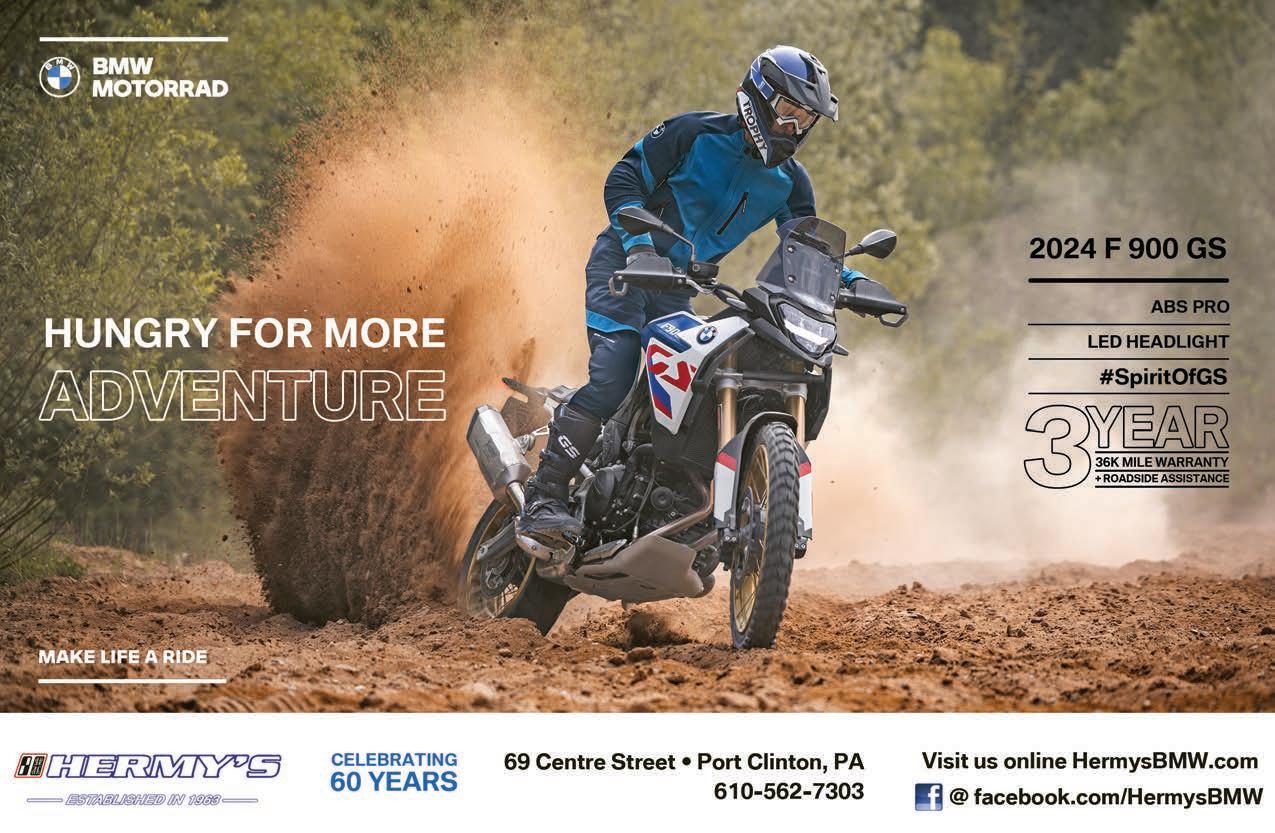
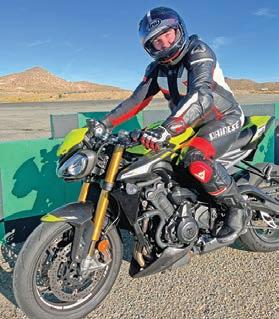
In August, “Fifteen hikers on an office work retreat in Colorado’s San Isabel National Forest left one man behind, who went on to survive a night on a mountain while injured.” The article goes on to state how the man had been left alone to summit a peak by himself and that the co-workers picked up trail markers that would have shown him the way down! Despite cell calls from him with “pin drops” showing his position, they offered no help other than to tell him he wasn’t on the trail and to go back and find it. He ended up spending the night on the mountain, injured from more than 20 falls, through periods of high wind and freezing rain. He lost cell service, but the next day, rescue workers found him. I don’t know the backstory behind this event, but those co-workers are shameful people.
When you accept the mantle of leadership, you accept responsibility for the well-being of the group, irrespective of ability or attitude. Some members are better at the activity than others, so you need to gauge your efforts - or the efforts of the group - based on the least skilled of the party. If someone is truly so bad at the activity that you know it will create a poor experience for everyone, then you need to make the hard decision not to include them. The hardest thing in the world is to tell someone “No, you can’t join us” but in the long run, it may be best for both the individual and the group. That person may be the biggest ass in the office, or they may not be physically qualified, or both. Still, there’s no excuse for leaving someone on a mountain where they might die. No person should be left behind. I’ve seen this on motorcycle rides where a group goes out with someone they either don’t like or who is a weak rider by their definition. You’ll hear, “Oh, Joe-Bob is coming along…” (accompanied by an eye-roll). Sometimes it’s someone who, despite prior coaching, lets a big ego get in the way of implementing the instruction: a poor rider who is too much of an ass to listen. Sometimes the response is a type of mob mentality where the hot shoes in the group set out to “teach them a lesson.” Regrettably, that lesson
Whatchathinkin’
Continued from Page 5 both of which are under new ownership, with Cary and Eamon at the helm of the Gray Ghost and Andrew at the Kitzhof. They have all done a wonderful job of keeping what we love about their places intact while updating and refreshing and making it their own. We look forward to many more visits with new friends.
Why go home when you can keep on riding? Right, so pointing our wheels north we, along with Mark and Betsy Byers, headed to New Hampshire/ Maine for the BMW RA rally. The riding in the northeastern United States is so diverse, getting from sea to mountains during a day’s ride, with lobsta, monsters and twisties to fill the day.

may be wrapped in a decreasing-radius turn with oncoming traffic or with a precipice on the other side. What’s better: to slow down to accommodate a slower rider, or to direct traffic around the inevitable accident, deal with a tow truck, ambulance, and a follow-on memorial service?

I frequently end up leading a small group. I have a reputation as a decent navigator and as a relatively patient rider. I typically point out road hazards and keep the group together. Just looking at me suggests that I might know a few good places to eat. When I do lead, I keep in mind the people for whom I have accepted responsibility, including the slowest/least skilled or even the person who may be annoying. Without false modesty, I know I’m a good rider, so I don’t have to prove it by leaving people in the dust. Even if I’m a member of a group led by someone else, I won’t get goaded into riding beyond what’s prudent for the road (or group). I’ll wait for people that are getting left behind. Let me say something again: when you lead a ride, you accept responsibility for getting
EVERYONE to the destination unscathed, regardless of skill or attitude. Sometimes the answer is to select a sub-leader who can take the more skilled members out ahead and to make arrangements to meet them at lunch. I actually like small groups (my “Rule of Sixes” column applies). If I’m leading, I like to keep the headlight of the last member of the group in sight most of the time. I’ve seen groups say, “We’ll wait at the next turn to regroup” only to have the next turn be miles away. If the tail-ender low-sides in a turn, by the time the group realizes something has happened and goes back, it could have been a half hour or more. As for “teaching someone a lesson,” there’s no place in our ethos for that out on the road: if they’re that bad, the lesson is to just say “no” to their inclusion in the group. ,
Rounding out the summer months, it was south to New Jersey Motorsports Park for the last round of MotoAmerica. This series also had some championships up for grabs, which makes for an exciting weekend and spending it with good friends makes it that much better.
April through September, half a year filled with miles of smiles, intertwined with the threads of friendships made through the 30 years of putting this magazine together. The time we’ve spent with our Backroads family has made a tapestry of travels, stitched into a quilt of companions, compadres and cliques. Thank you for sharing your time with us, and for letting us add you to our patchwork of pleasurable passages we call Backroads. ,

Hello Shira and Brian, I just want to say that you both inspire me with your personal approach to motorcycling. At times you both show vulnerability when you touch on your physical and emotional changes as you age. You face these changes, adapt, and move bravely forward. At 77, the most important advise I have learned from Brian is, “Don’t ride the motorcycle unless your are mentally and physically up to it that day.” You both inspire me and give me courage to “move bravely forward” on my Ducati and in life. And why not have an ice cream cone on the journey, right Shira?
Bruce Kagan Long Island, NY
Legalizing lane splitting across America is important. We had a great success here this past summer. Did a video interview here about how we did it www.youtube.com/watch?v=L7HwUgtev-k
There are lots of other videos on youtube about lane splitting that have a lot more views with a lot less useful info. Your audience should spend an hour with our video to see how to do it.
The basics: 1) All state lobbyists must be registered. 2) Find out who keeps the list of the registered legislative lobbyists in your state. 3) Find one of those lobbyists who enjoys motorcycles. 4) have him watch our ‘how to’ video. 5) get the lobbyist motivated. 6) voila, lane splitting becomes legal in your state. 123-456! That simple. Don’t wait for the AMA. Damn the torpedos, full speed ahead, etc.
Andy Goldfine – Aerostich
WHY?
Why is it that whenever I go to the city ( NYC), I see groups of young riders, riding up and down the streets.
1. They do not have a license to ride a motorcycle 2. They are riding an unregistered motorcycle with no plates
3. The bikes are probably stolen
4. They do not have insurance.
5. They are not obeying any traffic rules, like ‘One Way Streets, traffic lights, etc.
6. For the most part they are hazards on the streets of NY in the manner that they ride, doing wheelies and cutting in & out of other vehicles on the road.
I have been riding motorcycles for over 72 years and I am willing to bet you that if I was doing wheelies down the streets in NYC without a license plate, I would be stopped and issued a summons.
Again, I ask the question ‘WHY” - Why is this allowed to happen? We are not talking about electric bicycles. We are talking of 125 & 250 cc motorcycles. If it is against the law, what are the police doing about it? Nothing that I can see! But then again, in NYC you can basically get away with murder.
Dick Roberts


More Binge Worthy tV • More “Long Way…”
Star of the Long Way Round television series, Charley Boorman, has revealed exclusive details ahead of the 2025 release of his TV bike travel series, with best mate Ewan McGregor.
Boorman stated that the show could be on our screens as early as next spring, with filming having recently finished and editing underway now.
The 10-parter sees the pair return for a fourth installment in their Long Way series of global adventures, which this time follows them on a trip from McGregor’s home in Scotland to Boorman’s in England.
Far from taking the direct route, however, they will be seen navigating the highs and lows of a 10,000-mile loop through Scandinavia and up into the Arctic Circle, before venturing south into Eastern and Central Europe. Both opted for old-school machines for the journey, with McGregor tackling the adventure aboard his own 1974 Moto Guzzi Eldorado ex-police bike, and Boorman on a BMW R75/5.
“Doing this fourth one now we’ve gone back to old bikes – which makes things interesting,” Boorman told MCN. “I can’t give too much away, and you’ll have to wait and see how it all unfolded, but I think there’s a good balance between this and what we’ve done previously in terms of the riding
and the route.
“Like with Long Way Round, it was just born from the idea of two friends wanting to ride together,” he continued. “Doing the trip with Ewan is the great part for me. We’re old friends and it’s always fun to be together – I really do hope that comes through in the new series.”
“Pressure to rise” readyfordeButfeaturing BeauBier, fongand yaakoV uP CLose, and PersonaL
MotoAmerica, North America’s premier motorcycle road racing series, is proud to announce that its award-nominated docuseries “Pressure to Rise” debuted its new season on Thursday, October 3 with an exciting new format that takes viewers behind the scenes and away from the racetrack in 12 episodes.

The fourth season of “Pressure to Rise” will feature a different look than the previous seasons. While the first three seasons focused solely on the MotoAmerica Superbike class, season four will feature three riders - Cameron Beaubier, Bobby Fong and Kayla Yaakov – and three classes, Steel Commander Superbike, Mis-


sion King of The Baggers and Supersport.
“The previous format was great, and we all loved it, but it really was only an in-depth weekend recap for Superbike only,” said Steve Radley, the man behind “Pressure to Rise.” “The core audience that watched the show was mostly, if not all, race fans. We wanted to try and grow the audience by making it more personal. The new format is now spread out to three classes and condensed down to three specific riders, all at different places in their careers. We spend time with them at home and on the road to see what makes them tick come race weekend.”
“Pressure to Rise” can be seen on MotoAmerica Live+, YouTube, and the MTRSPT1 network.
United States Motorcycles is still positive in 2024. Although the market started without new wind, first half sales were 323.091, up a little 0.9%. Honda is still leader and Harley-Davidson is finally positive.
The two-wheeler market in the United States is the 14th largest in the World and one of the more stable, with annual volume steady in the range of around half a million since over a decade.
External factors, like economic crisis or boom, changes in political sustain to the industry, covid and others have only marginally affected the industry, probably because of the market itself.
Infact, the market is basically composed of street motorcycles, while the scooter segment – always very small – in not growing up.
For Americans, a motorcycle is a typical vehicle to ride free outside congested metropolitan town and they purchase just for leisure, life style, than for usage. People using motorcycle to commute to work are far fewer than they should be.
Ride your bike to work, dammit!
American were purchasing the local icon, Harley-Davidson, while now, with arrival of several new brands with a wide product range and with the decline of Harley-Davidson, customers take the opportunity to make new experience.
In 2024 the market started without new wind and the first half sales were 323.091, up a little 0.9%.
Although the available incentives are among the highest worldwide, the electric 2-Wheeler market is still marginal, but in the first half sales increased a good 55.0%.
In the competitive arena, having finally scored a yearon-year growth, the leadership is again in the Honda hands, even thanks to a sales +4.8% in the period.
In second place a good performance was scored by Harley-Davidson with registrations up 7.4%.
Third place of the podium confirmed by Kawasaki although sales were down 8.9%.
aMadistriButes
As part of its commitment to further educate riders about sound levels, the American Motorcyclist Association will once again distribute sound test kits to four chartered clubs across the country.
This year’s recipients of the annual AMA Sound Meter Program include the Coast Riders Motorcycle Club, Trail Riders of Southern Arizona, Coconino Trail Riders and Ocean State BMW Riders. With the sound kits provided by the program, these clubs will be able to accurately check the sound emissions of their motorcycles and institute training efforts to limit sound pollution at their events.
“With the AMA Sound Meter Program, we’re supporting and encouraging riders and clubs to take sound issues seriously and make decisions based on accurate

information,” AMA Government Relations Director and Western States Representative Nick Haris said. “Phone apps and cheap meters are often not reliable and it’s important to have accurate, repeatable information prior to implementing any sound-related rules.”
The AMA Sound Meter Program, started in 2005, has awarded more than 130 sound meters and helps riders and event organizers better understand acceptable sound levels according to AMA guidelines.
The sound testing kits provided by the AMA contain a Type 2 sound meter, a tachometer, training materials, a spark-arrestor probe, personal protective equipment and a storage case. ,

the tauGhannock Giant
Little Known Gaslighting in the Finger Lakes
There have been jokes and pranks played on others throughout history.
The Trojan Horse was not what it seemed. Some gullible folks fell for the Great Spaghetti Harvest, and then there will always be the curious case of Sidd Finch.
In the 1800s the State of New York seemed particularly open to all sorts of things. Spiritualism, new religions and Utopian communities had spread through the region. People wanted to believe in something more than getting up at dawn and working their asses off till dusk.
Our stop this month riding the backroads of this mysterious America is an easy roadside affair called…
The Taughannock Giant.
This particular story began when workers building a road to the Taughannock Hotel struck a large boulder while excavating.
As they dug around the rock they came upon a most remarkable find. It seemed that the roots of a tree had grown and wrapped around a stone head. Further digging uncovered an ancient, petrified man. The creature’s hands were crossed over his right thigh, and the left leg was crossed over the right, and it was huge.

Word of this discovery spread quickly through the local communities up and down the Finger Lakes.
The owner of the hotel was a fellow named John Thompson, and Thompson made the best of this discovery – having pictures taken, stories created for local and national news, and for a good while his hotel did very well monetarily because of the discovery of this ancient giant on his property.
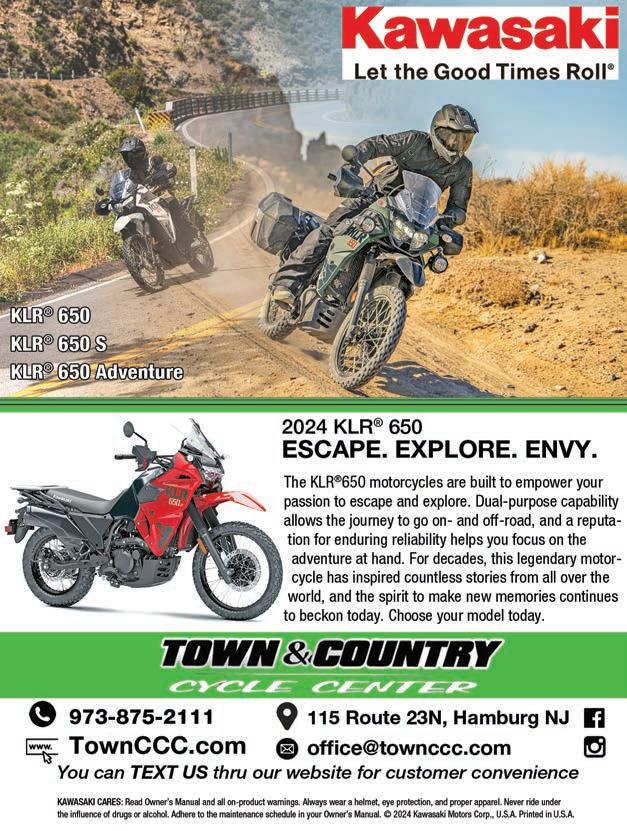
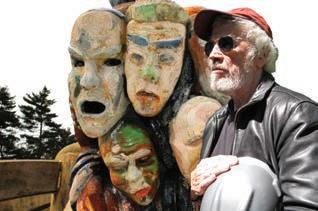

It didn’t seem to matter in the least that the very same type of prank had been played out just a decade earlier, in 1869, by a trickster named George Hull on the people of Cardiff, New York – just 60 miles to the east. Surely someone would remember this… but no – the story went nationwide and the people and money came pouring in.
Even Cornell University came to see and take samples of the “Giant.” They could not come to any consensus, which just added to the mystery and mystique of the Taughannock Giant.


It did not take all that long for the truth to come to light, when one of the gas lighters, a local workman named Frank Creque, got a bit loose-lipped at a local tavern a few months later and bragged that the stone giant uncovered on the hotel property was a fake. According to Creque, the plan was contrived to attract business to the Taughannock House Hotel. The hotel’s owner, John Thompson, and his friends had mixed a concoction of eggs, beef blood, iron filings, and cement, molded the material into the shape of a prehistoric colossus, and baked it in a huge oven.
The drunken man went on undaunted and told the patrons of the bar that in the middle of the night, they dragged their creation to where they knew workers would be digging and tunneled in from the side and pushed the stone man through the hole to its resting place, wrapping a tree root around the neck so it would look as if it had grown there.

Surely this was an obvious copy of the Cardiff Giant, that fooled so many a decade before – but did that stop people from believing that they had found a “Giant’ from Biblical times, maybe Atlantis – as no one should argue or dispute a good yarn – even engineers.
The Taughannock Giant, as it would come to be known, made Thompson a lot of money and his hotel notoriety… well, until the truth came out. It is said that it was eventually buried in an undisclosed field outside of Trumansburg, but a few years back a replica of the Taughannock Giant was recreated and is now on display alongside Route 96 that runs through the town, Trumansburg – surely a great piece of Mysterious America to be sought out. You’ll find the Giant right off Main Street in Trumansburg, New York.
Keep Seeking the Strange! O’Life Out! ,

the harley-davidson MuseuM
400 West canal street, MilWaukee, Wi 53201 414-287-2789 • www.harley-davidson.com
When you have a history as long, and as storied, as The Motor Company, you would think that there would be a museum dedicated to presenting Harley-Davidson’s story in the most impressive of ways; and you would be right.
The Harley-Davidson Museum, along the canal in Milwaukee, is a most impressive place.
On our annual chasing down of Major League Ball Parks, a stop to see the Brewers was on the list; and a visit to The Museum was most certainly in order.
Like the brand’s history – the Harley-Davidson Museum is
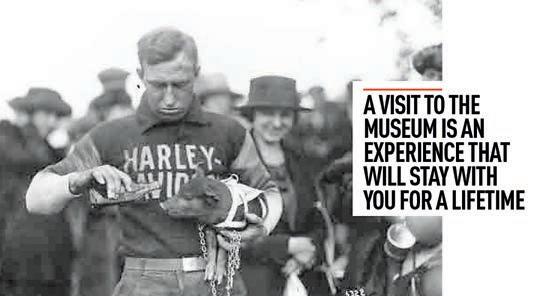

just a bit more than amazing. Yes - just a bit.
Although I did get to spend some time on Harley’s new Pan America CVO later in the summer, this trip to Wisconsin was on our work machines, and the two dirty and traveled ADV machines looked a tad out of place among the V-Twin faithful parked on the wide open square on which the museum is found - the magnificent statue of the “Hill Climber” – a gift from the Davidson family to the Company - dominates the square.
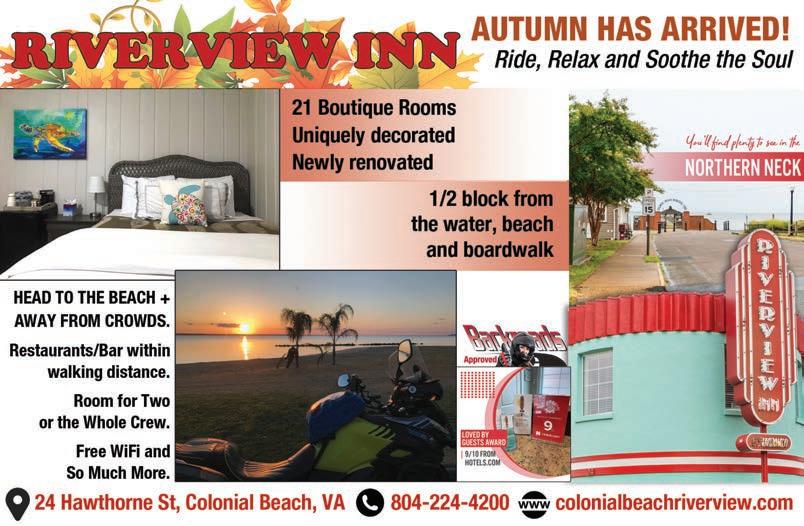
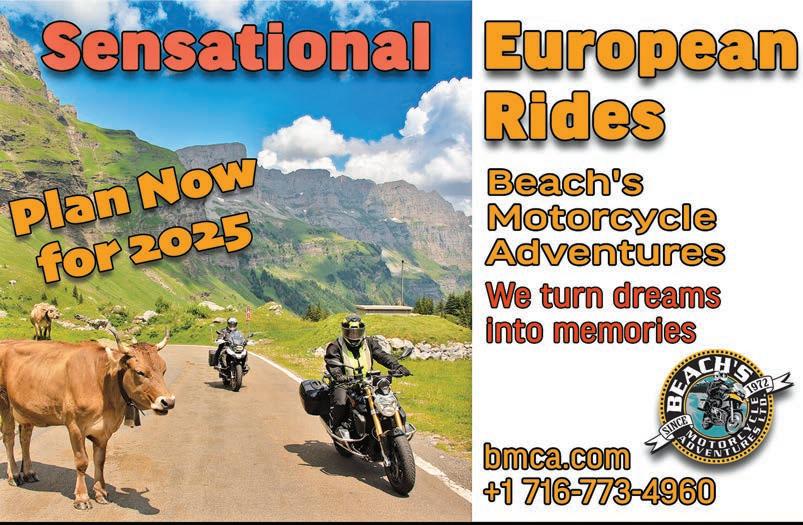
In addition to the museum, you will find their large retail store and smokin’ barbeque restaurant ‘Motor’ –and that is true – superb food awaits after you stroll the museum for a few hours – and you will spend a few hours at the Harley-Davidson Museum.
The museum is best walked through with the audio to accompany you – as there is much to learn, and although I thought I had a grasp of The Motor Company’s history – we both learned much and had a far greater appreciation when we were done.
Following along, down a 180-foot line-up of classic machines from H-D’s past, we strolled past some wonderfully maintained, or not (as found), machines from Harley’s deep past and through the years, decades, depressions, wars, and most of America’s history from the last century to a quarter into the new – both good and bad -the Motor Company was there.

The Motor Company has a room dedicated to the various incarnations of their famed V-Twin – Shovel Heads, Pan Heads, Flat Heads, Knuckle Heads all the way to latest and modern versions of the V-Twin, and single-cylinder engines.
In the same room interactive displays bring you the Look, Sound, and Feel of these bikes.
The Serial #1 bike, the oldest machine in their collec-

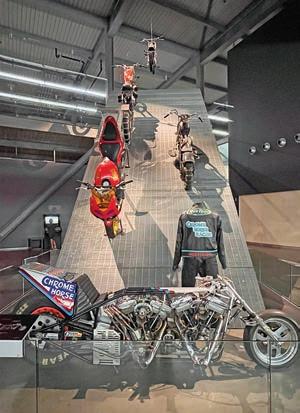



tion, can be seen, as well as memorabilia you will not find in any other motorcycle museum on the planet –original stock, a flyer from Harley-Davidson of Japan Sales Company – and the video of the long and storied team up between Harley-Davidson and the U.S. Military is featured.
Advertisements, flyers, and even a wonderful display of these machines made into toys for kids can be seen.
Seemingly jumping from the lower floor to the second, Evil Knievel’s famed XR-750, emblazoned with red, white & blue livery, sails from the take-off ramp. While I mention livery – we were really taken with the Wall of Fuel tanks, and the great color combinations and painting styles that came and went through the last 121 years; the Art Deco of the early 1930s were favorites.


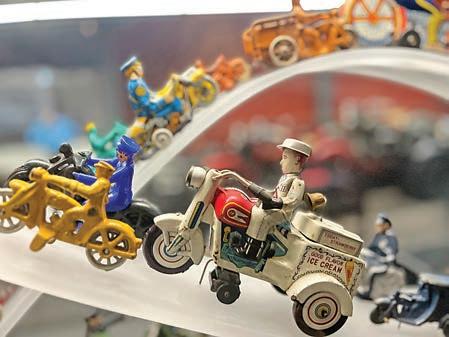

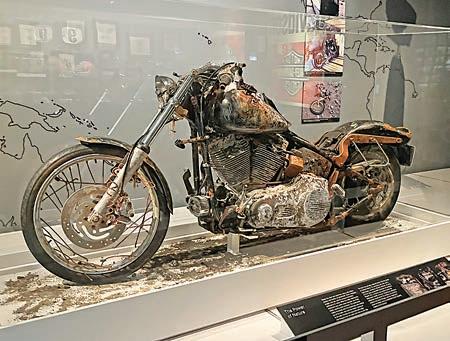
The Motor Company’s racing exploits were to be found throughout the museum, and the display of the Board Track Racers, with wonderful video being splashed across the boards and bikes, bringing life to the display, was stunning, and we watched it multiple times.

The Harley-Davidson culture and the company’s impact on the American rider will be found, as well as H-D’s impact in media, movies, and even cartoons.
Harley made more than motorcycles over the years. Have you ever seen a H-D boat, scooter, or golf cart? We had not.
One of the most fascinating displays is a very, very abused machine that was washed away from the coast of Japan during the devastating earthquake and tsunami that struck Japan in March of 2011. The following year a Canadian gent named Peter Mark found a trailer box on an island off the coast of British Columbia. Inside they discovered a 2004 Harley-Davidson Night Train. The owner was found in Japan, and Ikuo Yokoyama, who had lost so much the year before, donated the machine to the Company – as a memorial to all who lost everything that fateful day in Japan. Truly an amazing display. If you are a lover of the Milwaukee brand or just a true motorcycle person then a visit to The Harley-Davidson Museum should be on your Bucket List. It is incredibly well put together, it is full of history – and you will see many things you know, but I promise you will find, discover and digest many things that you did not. Truly one of the finest motorcycle museums on the planet. ,
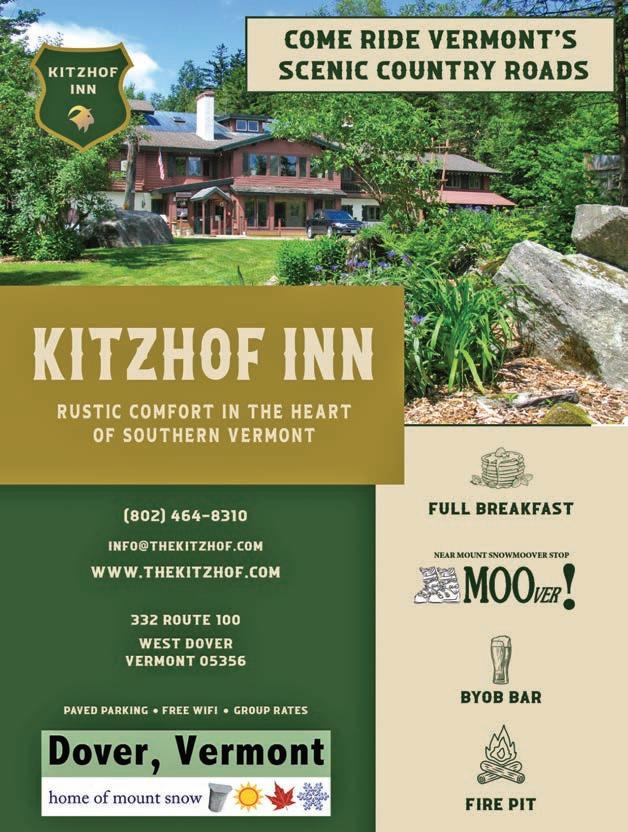

Prattsville diner
14582 ny-23, Prattsville, ny 12468
518-291-2076 • www.facebook.com/prattsvillediner/
We wonder how long it has been since we had an actual diner in the Great All-American Diner Run? Too long…
Although the idea was to feature that American creation,”The Diner,” in these pages – restaurants, bistros, culinary institutes, and more have filled the need for a great ride and good food for over 30 years.
But, every now and again we run into a classic. Such was the case when we recently were journeying down from the Adirondacks and rode through New York’s Greene County town of Prattsville.
We had been up this way a year back when O’Life did a feature on the famed sculptures found along the cliffs - Pratts Rocks.
It was Labor Day, and our romp was traveling south from the Mohawk River, and by later morning we were famished, and I hoped that the little diner I knew about in Prattsville was open this holiday weekend.
The name ‘Diner’ is used a lot, but in our mind, a true diner has that certain vibe or feel to it. The French would say je ne sais quoi?
I think it is a down-home, almost family feel to
tasty places to take your bike
it. We got that from the moment we walked into the Prattville Diner. We sat down at an open table and the waitress who was way in the weeds this holiday Monday, gave us a look that she would be there when she could. We got it – busy day, but we’re easy.


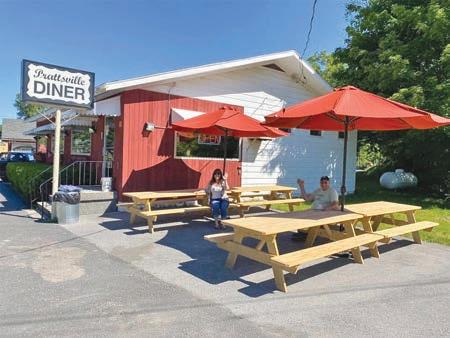
We looked around the diner, and you could almost tell the locals from the travelers, and certainly the city yokels.
There was a long tile and Formica counter with 14 chrome and scarlet seats on white pedestals. One end had an old glass display case housing many scrumptious looking home-baked pastries. A couple would find their way into my top case for later investigation.
A half dozen heavy wooden tables lined the



large windows facing Route 23. Tin signs adorn the wall warning the customer that we might be happy that they are open, and will serve us food. Today’s Menu – Take it or Leave It, or my fav…. Sarcasm – Now Served All Day.
Sooner rather than later she came over and looking to lighten up her harried mood I asked her name. “Trouble,” she said, pen and order pad at the ready. Okay then… they did serve sarcasm.
She was just joshing (we think) but it got us laughing, and she told us the specials, and took our easy orders.
Shira ordered one of their daily specials, the biscuits & sausage gravy, and had them throw on a scrambled egg.
I asked for an omelet with spinach, bacon and feta, which was not really on the menu, but they were happy to whip it up, and I added some rye toast.
The meals came out fast, hot, and really delicious – especially the potatoes that were perfectly crisp and crunchy.
While we were there we got to talk with a few others – both local and passersby – one woman on a Harley 883 that had her ten-year-old daughter on the back for a long holiday weekend Mother/Daughter adventure.



The waitress, Trouble, made sure our coffee cups were full at all times (good coffee too), and her hard-core demeanor showed itself time and again to be a craftily designed act she has probably been working on for some time now.
Although we just had breakfast at the Prattville Diner, they serve all the American standards, and it was late enough in the morning that many were ordering lunch at this time of the day.
The burgers looked plump, juicy, and delicious -and served any way you like - as long as they had it (There is that sarcasm again). There were a number of the classic standards to be found as well.
Beware, they only take cash and, luckily, this day we were “Bucks Up.”
When the weather is condusive, there are picnic tables with umbrellas outside for a little meal al fresco.
So there you have this month’s stop on the Great All-American Diner Run – this place certainly fits the bill. It has flair, flavor, and attitude – all in the right combination.
My mom would have been very comfortable here. ,


kinn Guesthouse
2535 s. kinnickinnic ave., MilWaukee, Wi 53207
600 n BroadWay, MilWaukee, Wi 53202
855-546-6653 • www.kinnguesthouse.com
This month’s stop in this long trip called We’re Outta Here could not be more perfect. For any of you who have made the pilgrimage to Milwaukee and to the home of Harley-Davidson, you know how things can get a bit crowded during special events, but we have come across a simply wonderful B & B, not all that far from everything for which Milwaukee is known. Before we start talking Harley, we do need to touch on some of the other neat things around this town. The National Bobblehead Museum - how can we overlook that -and the Brewers Baseball team. What a beautiful stadium! Hey – motorcycle only parking! Go figure.
More or less in the middle of all this is a superb guest house – that perfectly fit our plans for our visit to Milwaukee.
Nothing can out shine the incredible museum that the Motor Company has created… but the Bobblehead Museum is fun, and taking in the Brewers pounding the Rangers with a Grand Slam truly made the night,
But having a great place to retreat to after all the Midwest fun is awesome, especially when it is as neat as the Kinn Guest House.
Milwaukee has an odd reputation. Laverne & Shirley, those other guys… But what we found
a weekend destination keeping you on the backroads
was a throwback to those happy days. It seems to us that this town hadn’t watched the news. It was a pretty easy place, and so was the Kinn Gueshouse.
The story behind the Kinn began with family. Charles Bailey, who grew up in Chicago and loved the community but saw that it was changing, happened to visit Milwaukee and saw that the quaint Midwestern charm he knew still existed here. He moved his wife and then 4-year-old not too long afterwards. Bailey’s family was in the hospitality business in Chicago – luxury hotels with white glove service, bell hops and the like. He felt that was not to be in his life but, after an ‘ah-ha’ moment, he thought that the term ‘lux-




ury’ had a different definition today, exchanging white glove for contactless and turn down for self-sufficient, with large, spacious rooms overshadowing billowing lobbies. With that thought in mind, he purchased an historic building in the Bay View section of Milwaukee and set about to redefine what luxury lodging could be. The finished project is the Kinn Guesthouse/Bay View. Why the name Kinn? The Bailey family wanted their guesthouse to have a connection to family and community, mixing the ideals of home and hotel. After researching, they discovered that the name of the street – Kinnickinnic Avenue (isn’t that a fun word to say?) – actually meant ‘to mix two things together’ and they immediately knew they had landed on the perfect name.
Entry to the guesthouse is with a text code,





which worked well, and through the door next to the Italian restaurant, Sorella, which resides downstairs. It smelled delicious and we certainly would have partaken had we not been attending the Brewers/Rangers baseball game, with hot dogs on the menu for dinner.
Up the well-polished wooden stairs, you will find the communal kitchen. This space is extremely well-stocked and appointed, with pro-series ranges and cookware, farm-style sinks, fullsize fridges and all the flatware you’d need to feed a family or a group of friends. Of course, there is a state-ofthe-art coffee maker and an eclectic assortment of teas to start your morning. If you are staying for more than one night, the shared fridge (marked by room number) can accommodate your food.
Our room – a standard King – had a towering ceiling which dominated the space and a large, brightly white bathroom with an equally large shower. The artwork was fun and certainly made us feel at home. The large windows let us view the titanic thunder storms which painted these big rooms with an electric fury the night we were there. Storms notwithstanding, the Kinn’s bed was so awesome, and the shower and bath could not be better.
The neighborhood is as eclectic as the Kinn itself. There are a number of restaurants, taverns, and pubs within walking distance, as well as the restaurant below, and plenty of local attractions and shops to keep one entertained when not riding or visiting the Harley-Davidson Museum.
If you are going to stay planted here in Milwaukee this is a fantastic option. Kinhas another location more downtown, with the same laid-back vibe but with 31 rooms, chef’s kitchens on each floor and several other gathering spots to house your whole crew. ,


An old fashion ice cream shoppe – what a wonderful place to savor your sundae, shake, malt or whatever form of ice cream you may choose. Red vinyl stools, stained glass lighting, soda jerks with paper hats –wonderful nostalgia indeed.
Sometimes these cute little places just aren’t around when you want an ice cream fix. Sure, you might settle for a chain store’s cone, but what about those folks who opt out of the brick and mortar for the freedom of the food truck. There are so many festivals all over our riding area during the summer that you could probably throw a stone and hit a food truck. I happened to find two which I thought especially delicious – Dolato



Espresso and Vampire Penguin.
I found Dolato Espresso while attending the last round of MotoAmerica at New Jersey Motorsports Park in Millville, NJ. NJMP is a fine facility, and we always have a great time hanging with our moto friends, but this year’s selection of food trucks was particularly appealing. Southern BBQ, Stir Fry Noodles, and Dolato – serving homemade donuts, gelato and some really good coffee concoctions.
Giovanna and Fabiana Russo (mother and daughter) are the chefs behind both Dolato and their original food truck, Bella Ciao Pizza. Bella Ciao originated after the tragic death of Giovanna’s husband, Francesco, in a car accident. They were both from Sicily, Francesco being a gregarious soul with a passion to cook. They imported a wood fire pizza oven from Sicily which they would use on a regular basis for entertaining friends and family. When Francesco passed, Giovanna sought to honor his memory with something they were both passionate about, and Bella Ciao Pizza was born.
Friday of MotoAmerica was a bit damp and chill, so a fresh, hot cup of coffee with a shot of espresso from Dolato was in order. The gelato menu for the day was super tempting, but I settled on the coffee and a cannoli-cream filled donut, one of many creative flavors such as Cinnamon Toast Crunch and Lucky Charms they had to tickle one’s tastebuds. The following day, with the sun shining and the smell of race fuel in the air, I found my way back to peruse the flavor case, which was packed full with colorful creations such as Caramel Choco Sea Salt Pretzel, Roasted Marshmallow and their seasonal Pumpkin. I



watched MotoAmerica’s Superbike while enjoying a double scoop of Black Cherry Choco Chunk and Pistachio, savoring the density of flavor and content, with a delicious wafer tucked in for good measure. In addition to their coffees, lattes and affogatos, you can have a donut sundae. You can follow Dolato Espresso on Instagram and check out their website at dolatoespresso.com for their seasonal schedule.
Vampire Penguin – what’s this you say? We found this distinct and surprising dessert at Warren County Tech School’s Robotic competition earlier in the year. After watching these most talented students creating amazing robots and competition BattleBots, we wandered over to the array of food trucks. We said exactly what you just did – Vampire Penguin?
Here’s the deal……
Vampire Penguin was started by Paolo and Leo San Luis about 10 years ago. Brothers from the Philippines, they came to the U.S. in 2000 and, in 2013 they decided to open a shaved snow/ice

business. Playing on their childhood love of ice candy, they experimented with versions of dessert ice, combining the fine texture of Hawaiian ice and creaminess of Taiwanese ice with the American snow cone. Shaved Snow has the flavor and creaminess of ice cream, is light and fluffy like snow, cuts and eats like cake and, in short, is a Happy Mouth Confusion.
As for the name, they decided to have ‘Penguin’ as they are associated with ice and ‘Vampire’ because the outcome of their experimentations was out of this world, and something that should not exist, like a Vampire Penguin. They were/are successful and have franchised their shaved ice.
Alison Distefano and Jeff Levecchia came on board in August, 2022, opening their doors in a shared space with a café in downtown Freehold, NJ. The following April, they launched their food truck and since last November have decided to close the store and concentrate solely on their SnowMobile. The flavor options for Vampire Penguin are ever-changing and amazing. I opted for Mexican Candy which is Mango Snow topped with caramel, Chamoy and Tajin, (Mexican sauces) and mango boba and had quite a nice kick to add heat to the sweetness. Brian was on board with Cookies ‘n Cream with Cookie Snow topped with condensed milk, Oreo, Chocolate sauce and whipped cream. Some of their other offerings are Strawberry Cream, Orange Dreamsicle, Pina Colada and Grampy Vampy – Chocolate Snow, chocolate chips, brownie bites, white and brown chocolate syrup and whipped cream.


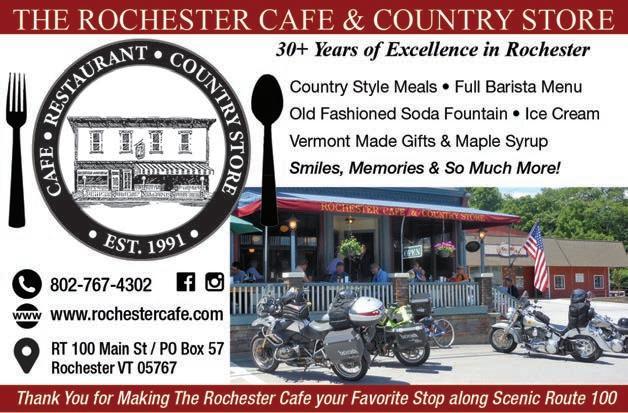

No matter your choice, you will be very pleased with both the flavor and texture of this unique dessert.
In addition to Snow, they have added Acai bowls, Boba drinks, coffee and hot chocolates. You can find them online at vampirepenguinnj.com where they have their SnowMobile Schedule listed as well as on Facebook (Vampire Penguin Freehold) and Instagram (vampirepenguin_nj). ,

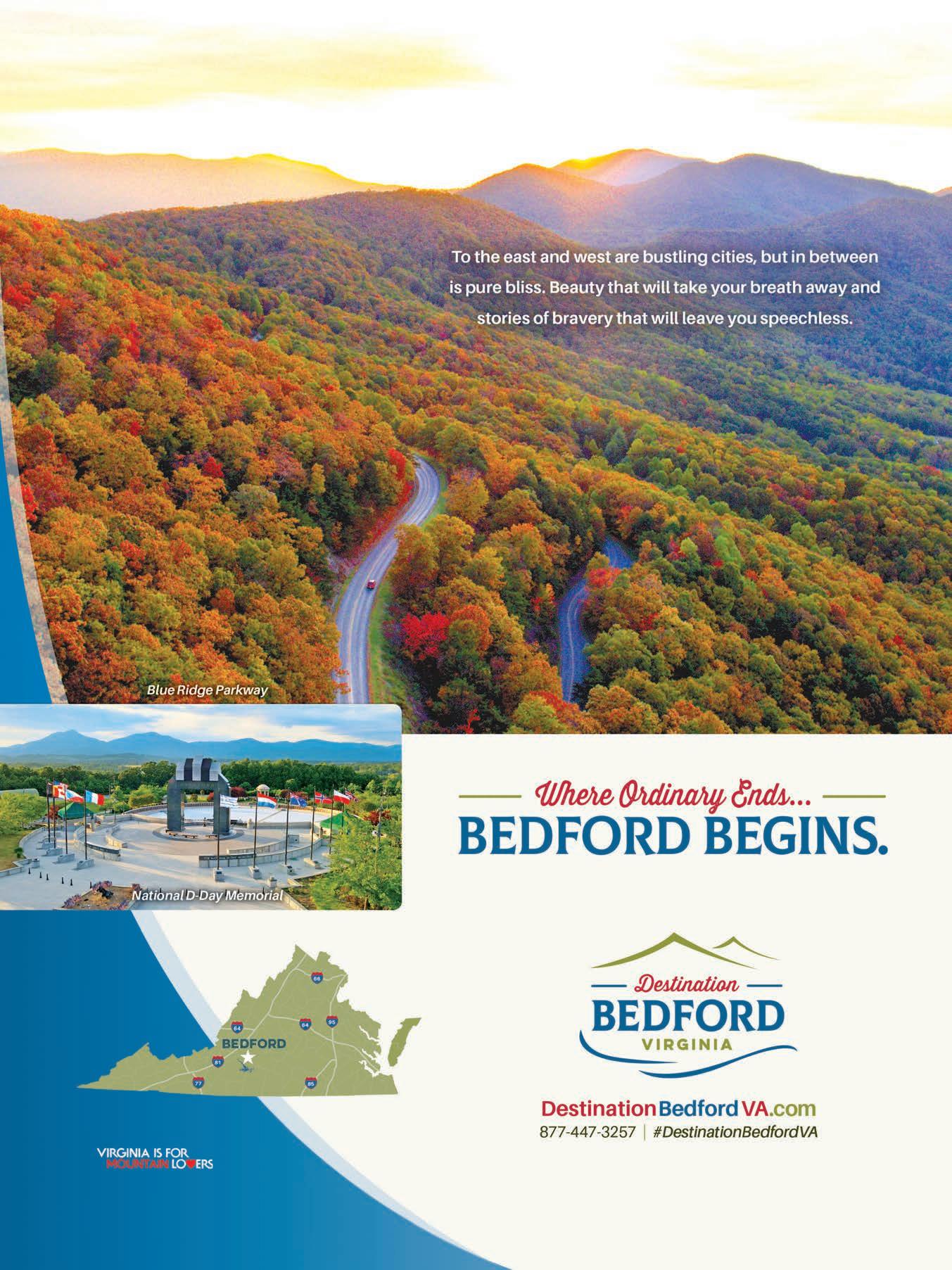

As this seems to be a Backroads with a good deal of Harley-Davidson sprinkled about – it is of note that during the Second World War these machines played a huge part in our victory… but that victory truly began on June 6th, 1944 with the largest seaborne invasion in human historyNeptune, Overlord, D – Day.
We have been to this amazing and stunningly well-done memorial many times, and it has been our pleasure to bring many of our riding friends here. This solemn place began when several veterans, businessmen, and other supporters, led by a man named Bob Slaughter, started what would turn into the National D-Day Memorial Foundation.
In 1996 then-President Bill Clinton walked Omaha Beach with Slaughter, and a year later Congress declared this memorial ground, in Bedford, Virginia, a national monument.
Why Bedford?
Among the hundreds of thousands massed off the shores of Normandy on the morning of June 6, 1944 were 44 soldiers, sailors, and airmen from the town and county of Bedford, Virginia. For almost all of them, this would be their baptism of fire. Of the 37 assigned to Company A, 31 were loaded into the landing craft and headed for Omaha Beach in the first wave; the remainder belonged to supply details and would arrive later. En route, a landing craft struck an obstacle and sank, stranding dozens far from shore, including five of Bedford’s own. The remaining 26 successfully reached Omaha Beach, where 16 were killed and four wounded within a matter of minutes. Three others were unaccounted for and later presumed killed in action. Another Bedford soldier was killed in action elsewhere on Omaha Beach with Company F, bringing Bedford’s D-Day fatalities to a total of 20. In comparison with its wartime population, Bedford suffered the Nation’s highest known per capita D-Day loss, a somber distinction for the rural Virginia community.
Though declared a national monument, the project would receive no federal funding. Peanuts cartoonist and World War II veteran Charles Schulz, whose depictions of America’s favorite beagle Snoopy in scenes from the Normandy invasion appeared in newspapers across the country, signed on as national campaign chair. Saving Private Ryan director Steven Spielberg was among the Memorial’s early donors. Their combined star power helped take fundraising efforts nationwide.




Memorial’s first phase that Memorial Day. On June 6, 2001, Bob Slaughter stood beside a second American president as George W. Bush dedicated the National D-Day Memorial on the invasion’s 57th anniversary.
Since its dedication, the Memorial has welcomed tens of thousands of visitors each year. On June 6, 2019, the Memorial marked the 75th anniversary of D-Day with more than 10,000 in attendance, including more than 100 World War II veterans.
Hundreds, including D-Day and World War II veterans, gathered for a groundbreaking ceremony on Veterans Day 1997. The Memorial would be built upon consecrated earth, a mixture of sand from the coast of Normandy and Bedford soil. The Foundation unveiled the Memorial’s first sculpture on Memorial Day 1999. The Overlord Arch, the signature monument, was under construction by the spring of 2000, in time for the dedication of the
The Memorial commemorated its 20th anniversary in 2021, with a renewed resolve to teach the lessons and legacy of D-Day for generations to come. Every time we roll around the Memorial, and park our machines, a quiet tone of respect comes forth, and walking through this Memorial always brings a mix of humbleness and gratitude, along with respect and admiration for the warriors who carried out that perilous mission and began the
end of that terrible struggle between good and evil that enveloped the world last century.
The cast statues of the soldiers storming the beach, with the water spitting into the air around the men – German bullets coming so close – one soldier hit and dead on the beach.
The men scaling the cliff, while the enemy rained death from above them. This scene, found in a beautiful memorial, in the peaceful Virginia countryside is emotionally shocking.
In the museum, there are many artifacts, and you really do need to read the stories to understand what is before you.
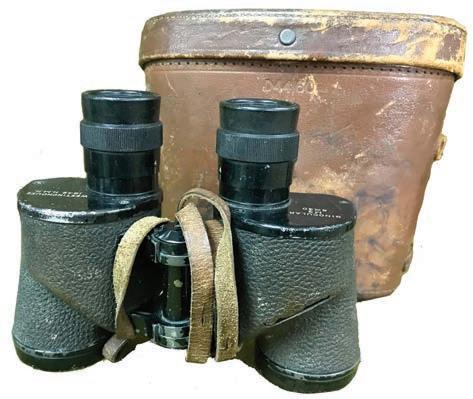
The Draper Binoculars…Frank Draper carried these binoculars as his landing craft approached Omaha Beach. A German shell struck the vessel, mortally wounding Draper before reaching shore. Aboard the troop ship Empire Javelin, a British sailor named Bert Fuller tried to render first aid to the dying man, removing the binoculars from Draper’s neck to provide comfort. Draper died within minutes. Fuller kept the binoculars as a reminder of D-Day for sixty years before returning them to Draper’s family in Bedford.
The Schenk Bible… One of the famous “Bedford Boys,” John Schenk, had this metal-plated New Testament in his pocket when killed on Omaha Beach on D-Day. His wife and mother received the Bible later that year.
So many stories, so many men and women.
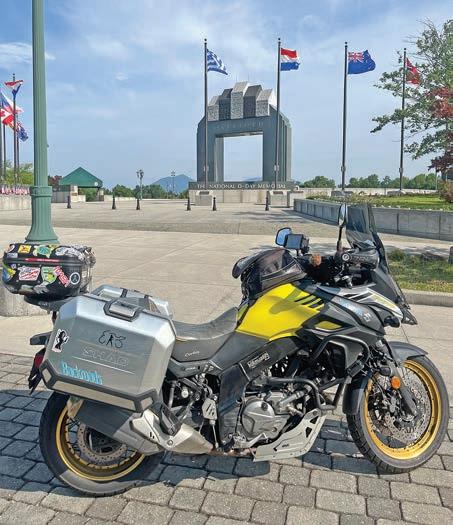
The National D-Day Memorial is so worth visiting. It is an amazing place that will make you humble and proud at the same time.
Although Veterans Day would be a most excellent time to visit, maybe, perhaps a quiet day when you can take it all in and maybe sit for a bit – like we always seem to do. ,

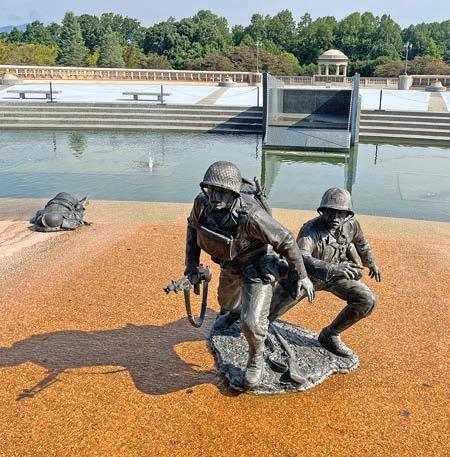



Well, I stopped all alone at the top of the hill I looked across thе valley at the world so still All the friеnds I’ve been missin’ and the ones I love They shine like the diamonds from the sky above Still got the fire, and the flame keeps burnin’ I’m a cannonball, shootin’ down the line…
Cannonball - The Doobie Brothers
No one could ever say that I do not love my music (not mine, but theirs, mine is okay too) and that music is woven into so many stories in this magazine.
To start this trip, I have to go back a few years on a July 4th weekend when the Doobie Brothers played at Bethel Woods. A full moon rose behind us as they sang Black Water, and then Patrick Simmons began a new tune called Cannonball.
Simmons is an avid rider and has been all his life. This song touched me from the start, and the words of riding this nation, heading home… like a cannonball shooting down the line.
We had an invite to ride Harley-Davidson’s newest Pan America CVO in the Black Hills – but the clincher was that I could take it home. Not forever… but still back to the Garden State. Plans were made, scuttled, made again… and as dawn rose in the east on an early August day, a jet took off west.
Later that day I took the keys (well, fob) from H-D Press Maven Paul James on a really beautiful machine. Legendary Orange and Raven Black Metallic and an Atlas Silver #1 logo. This bike is almost too pretty… almost. Ahh Sturgis.
As pretty as this region is, and it is, it was just a bit crowded for me (right?), so I thanked Paul, and Karen Davidson who I got to meet, realizing I was
in the presence of motorcycle royalty, and made not so short work escaping.
The Pan America has a navigation system that works with your smartphone, and I promptly headed in the wrong direction. Like all new tech, it would take a little bit of learning to figure it out. I had time, nothing but time. The plan was to get to the center of things, USA-wise, but I needed to head west and then north – but the side trip east did give me a chance to visit the Black Hills National Cemetery. Since its creation in 1948 nearly 30,000 warriors have been laid to rest here. Like all these places it is taken with a solemn reverence.
Rerouting back west to eventually go east I picked up Route 85 and headed towards Belle Fourche (Pronounced Foosh – don’t get it wrong).
In the short time since pick-


ing up the Pan America, I had sun, cold, hot, and then storms – typical ride. But the sun broke through the clouds beaming down a heavenly light.
I stopped to just take it in, and Simmons’ words came rushing back…
Well, I stopped all alone at the top of the hill I looked across thе valley at the world so still All the friеnds I’ve been missin’ and the ones I love They shine like the diamonds from the sky above Yep… we all need a moment like that.
The town of Belle Fourche, South Dakota – has a unique claim that nobody else, well almost nobody, can make. It is the Geographic Center of the United States. Lebanon, Kansas might argue.
This geographic center is approximately at latitude 3950 N. longitude 98-35 W, near Lebanon, Kansas. When Alaska was admitted to the Union, the geographic center of the forty-nine states shifted about 439 miles northwest to a point at approximately latitude 44°59′ N, longitude. Yes, I cut and pasted that.
But Belle Fourche has a stunning monument, with all the states and Canadian flags surrounding it.
I headed north along what once was called the Great Northern Cattle Trail. Then I saw a sign for the Center of the Nation – 8 Miles. What?
It seems that it made more sense to the good people of Belle Fourche to place the monument in the middle of their town, on the famed 5th Street, than in the middle of a field along a rough gravel road. But this is what the Pan America was made for.
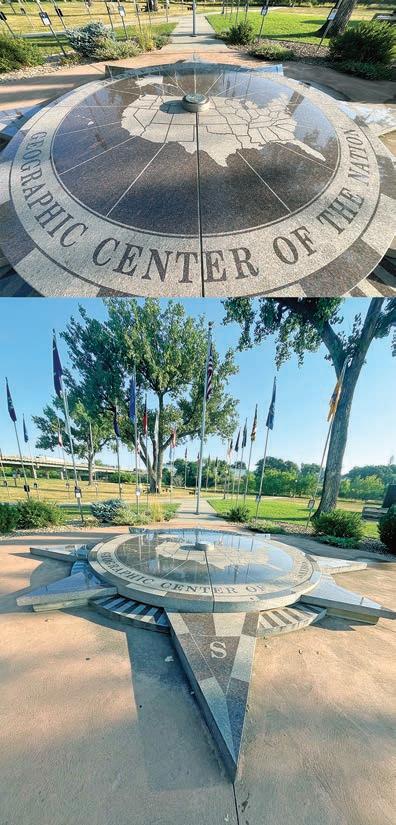
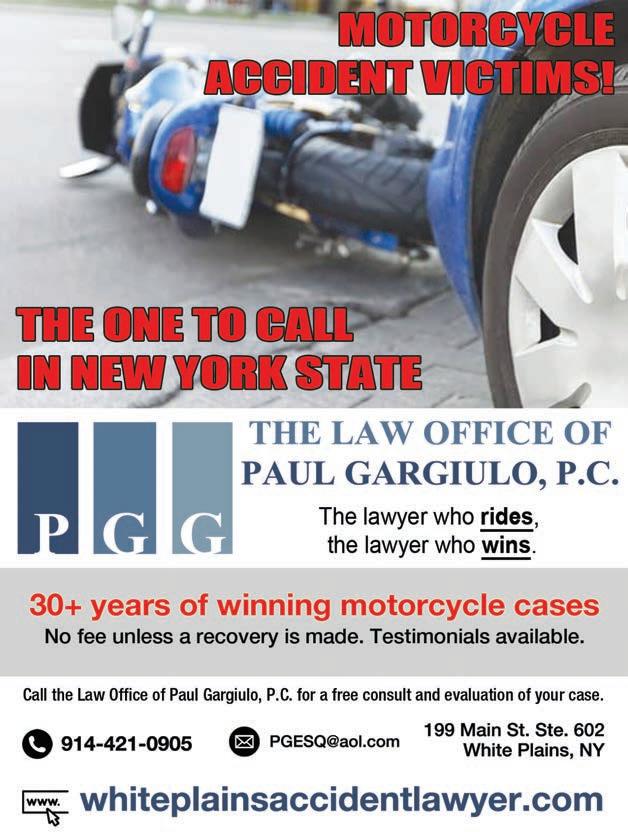

Much like many other large-displacement ADVs, this is not a true off-road machine, but in dirt-mode it had chops for sure.
I lanced through the Slim Butte Area – a geologically beautiful part of the state, and then along a wide-open range where there were deer and antelope playing.
As beautiful as South Dakota is, there is a lot of nothing, broken up by tiny oddities that I try to make note of so you will keep reading.
Like Reva. A fuel station, general store, and the occasional Turtle Race. By late af-

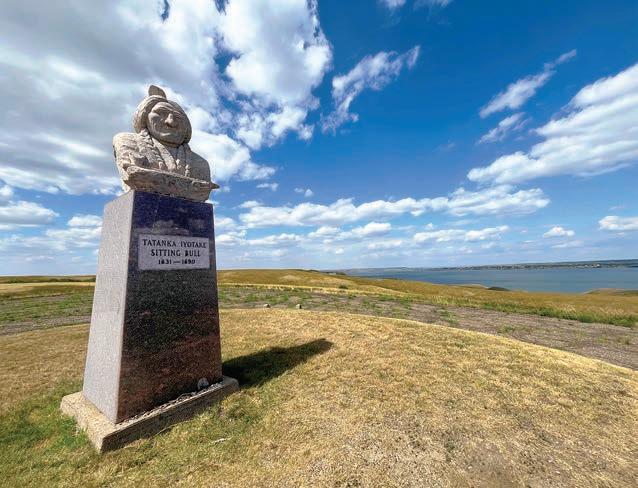
ternoon I had my sights on a place of reverence - the resting place of Tatanka Iyotake – Sitting Bull.
This is surely O’Life territory, as the story is almost beyond reason, but this deserved another stop and bowed head. The Obelisk to the great woman Sacagawea, who helped lead Lewis & Clark, is amazing as well; both sitting on a stunning bluff overlooking the Missouri River.
straight and less than appealing riding roads for a good chunk of the day; at least till I got to Minnesota. But I did have to go north first and followed a smaller road designated 1806, which mimicked parts of the river in a very twisty fashion.
Take em’ when you can.


Part of this trip was to ride in North Dakota, the only state missing on my list. But my quest to find Sitting Bull had brought me to the mighty Missouri, the longest river in the nation, so to notch North Dakota I’d turned north.
There is a small Sioux Nation town called Cannonball. I was not sure what I would find there, so I could expect nothing, and might be be surprised.
This trip would change flavors many times, but rivers would be my goal and I would cross the most important waterways in our nation’s history during this journey. Each one would have many meanings, one being I would be that much closer to home. I spent the night in the town of Mobridge on Lake Oahe, part of the Missouri, one of the largest reservoirs in the nation, and the deepest water in South Dakota. Oahe means “Foundation” in the Lakota language, but I got the feeling, as grand as it is, that some felt cheated by the land grab for this… again. That feeling would hit this white Scottish boy from Queens many times during this trip.
Still, this is a sportman’s paradise, with a rodeo flair, and the town had an awesome statue called Walleye Up. Created by local artist John Lopes, it has a bronco-riding cowboy atop a giant walleye breaking the Oahe waters.
I knew I would be heading east, on mostly
At this point, I felt that I was a Ghost Rider… well, not Johnny Blaze, but more searching out the ghosts of the First People.
I have never been a fan of the “Indian” name – it was wrong from the start, wasn’t it? India is 8,000 miles thataway!
So much had happened in this part of the nation – and I was hoping to find a bit more of this.
My first stop was the Standing Rock, in Fort Yates, but as I went north, I was met by a lot of poverty as I rode into part of the Sioux Reservation. Somewhere along the road north, it opened up to the most massive fields of sunflowers I have ever seen.
There was no sign as I crossed the border in North Dakota, but the flowers were the most amazing sight in early August.
North Dakota. All 50 states ridden.
Please don’t make Puerto Rico a state; you’ll mess me all up.
Fort Yates has a bit of history… it may be the real resting place of Sitting Bull, or not. The plaque on a small dirt road says it is, but South Dakota’s monuments optics are far better.
Standing Stone has a place of legend, as this rock, mounted along the river, has not been moved in centuries. A child turned to stone – revered
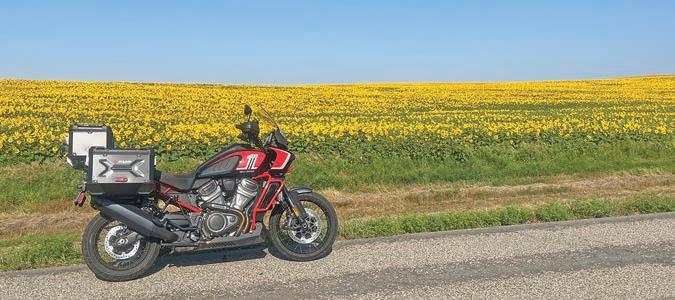


by the locals and gives the name to the Standing Rock Reservation which covers over 2.3 million acres of stunning prairie.
I talked with a retired federal agent who was curious about the Pan America, and he told me of the region, and the two sides to it. Good and Bad - and to watch my 6 all the time. He was “The Good” for sure.
When I rode to Sitting Bull’s “original” burial site I got “The Bad” side.
My Spidey-Sense hitting full on, as some dangerous-looking coyotes came sniffing a bit too close. I was sad to think I had to watch my back even for a second. I moved on wondering how it all got like this. Along the reservation, you have some working so hard for a good life, and others not even trying.
The H-D Navigator was becoming my friend, as with all things you need to get used to it. Yes, you can make up your own routes and upload the GPX file to the bike, via your phone. Not ideal – but workable. The H-D App can be moody but worked as it should for 80% of the time. I yearned for my zumo.
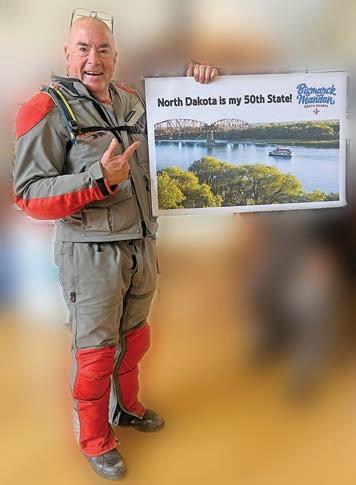
I punched in Cannonball.gpx, and hit the button. All good. It did not surprise me that that Doobie Brother song came through the headsets as I rolled towards a small town. My, my, my, how things happen.

The town was not much, but as I rolled to the right, towards the Missouri River, I saw a monument, with a ‘cannonball.’
I slowed to look and spied a young man who owned the property, and was doing yard work – with a scythe. He looked up, saw me looking at the cannonball, and motioned me in.
He had a U.S. Marine shirt on, and unlike a few miles back, I felt more than safe here, and he told me a bit about the town and even took an image for me in front of the cannonball.
In truth, the town is named for the Cannonball River. Jake was great, and I thanked him for the kindness, heartened that all is not lost in the world.
A bit later Route 1806 headed towards the capital of Bismarck, and the city of Mandan. Suddenly there was wealth.
Not Thurston Howell wealth – but middle-class homes, nice properties well kept. Well, not as well kept as Jake’s.
In Mandan, I stopped at the local Visitors Center. While there I saw a poster stating “North Dakota is My 50th State!” I asked the woman, who had greeted me warmly when I arrived, what that was about. It seems that a lot of people get to North Dakota last, and she did not know why. I told her I, too, was a
first-timer and this finished all the states… She took a picture AND gave me a certificate.
I was asked once how far into a state you have to ride to say you rode in a state. I once thought it was the ability to go to their state penitentiary; now I know just far enough to get a certificate.
From here I was going to bite the bullet, not that it mattered but east was straight and I picked up I-94 and pulled the trigger towards Fargo, on the far eastern side of the state.
A comment here on the Pan America seat. It might be the best “stock” saddle I have ever encountered in 50 years of riding. Period.
How do I know? I never once thought about it. That says it all.
I had some miles to cover this day, but there was one more important stop along the way.
The “World’s Largest Bison Monument” stands tall on the hill in Jamestown, ND. This 26-foot-tall, 60ton concrete giant, named Dakota Thunder has been standing watch over Jamestown since 1959. After a quick photo-op, I spent a good hour at the North American Bison Discovery Center.
I knew of the American Bison story, but the video at the center was very moving, and hard to take in.


Make no mistake – this is our American animal!
Two thousand pounds, able to clear a six-foot fence, and run 40 miles per hour. Magnificent.
They used to shoot them from trains for fun, leaving thousands of dead bison to rot. Who are the real American animals?
Once again, I felt I was chasing ghosts, this time millions of them as far as the eye could see.
This was a solo trip for a major part – and I want to thank the Shiraka Travel Agency for making some last-minute and incredible hotel reservations when I texted her in the late afternoon and told her where I thought I would be. She would then do her magic and tell me where I was GOING to be. Love you, Red!
Day Four • Oh, Ya ya … Fargo and to the source
Fargo is an odd town but made real notoriety when the Coen Brothers filmed the movie with the same name in 1996.
The film is a cult classic but is probably best remembered for the “Wood Chipper” scene. It’s a Coen movie, with a wood chipper – if you are not familiar, that is okay.
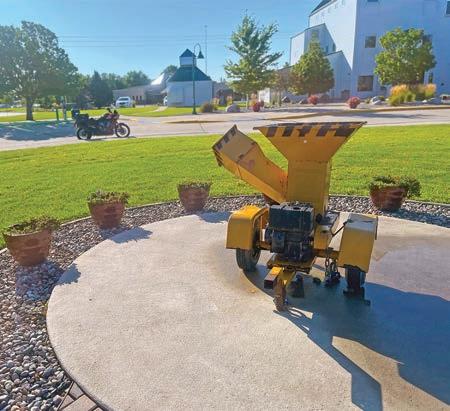
From here I crossed over into Minnesota. I had already run and crossed several rivers, but between Fargo and home was the beginning of probably the most famous American river. The Ojibwa Indians named it misi-ziibi, which means “Long River.” We know it as the Mississippi. At 2,340 miles long, it is the third longest US waterway, and like everything it had to start somewhere, and that somewhere is Itasca State Park.
Starting at less than 20 feet wide, the Mississippi travels first north, before heading south. I rode to the park and found dozens of families with kids all enjoying the ankle-deep waters as it started its journey to the Gulf of Mexico. An amazingly humble start to Ol’Man River.
The riding in the western part of the state was quite enjoyable. Lots of lakes – big, small, in between – like 10,000 of them!
If you wonder how all these lakes got here, well it was all due to a lumberjack named Paul Bunyan.
Paul Bunyan stories are plentiful. He cleared forests with one swing of his ax. He and his trusty bovine, Babe the Blue Ox, dug the Great Lakes to quench the thirst of his fellow loggers. He created the Mississippi River by simply dragging his ax behind him. They say their mighty footprints are the real reason for all of Minnesota’s lakes.

One thing is certain – the town of Bemidji is the first town on the Mississippi, and everyone agrees that Bunyan was born here. It had to be - so I headed north, crossing over the Mississippi many times this day, and each time it was just a smidge bigger. Down along the river in Bemidji I found both of them, Paul and Babe, just standing in the local park taking in the day.
The “Chipper” is front and center at the Fargo Visitor Center and was a must-see that morning. I was surprised there wasn’t a foot sticking out of it.
By now it was mid-afternoon, and I was heading to Duluth for a long overdue visit with our friends at Aerostich, and the road would bring me through the Chippewa National Forest, and the Leech Lake Reservation.
Along the way, I passed a Historical Sign marking the 1854 Treaty Boundary, drawn after the Chippewa of Lake Superior entered into a treaty with the United States whereby the Chippewa ceded to the United States ownership of their lands in northeastern Minnesota. There seemed to be a new treaty every few years here.
Around then dark clouds began to come into sight, and not soon after I got to give the Pan America’s rain-mode a serious test. The bike’s Revolution Max 1250 engine can be tame or a beast, depending on which five different power-modes you ask for. Rain, Road, Sport, and two different off-road modes. In the downpour Rain did the job admirably – the bike steady, competent, and still a blast to ride through the puddles.


With the storm clouds now in the mirrors I rode around the long curve and down the steep road –the vast Lake Superior taking in the horizon and the very cool city of Duluth right below. It was a stunning first sight of the “Zenith City of the Unsalted Seas.” That’s Duluth’s nickname – I would never make that one up.
I had come to Duluth for a particular reason, but before that, I made quick run to a small two-family home on North 3rd Avenue East. In many ways this humble home was the start of the way we look at music, and especially songwriting here in the United States – it was the boyhood home of Robert Zimmerman – Bob Dylan.
A lot has changed in the city since Bob’s family moved away in 1948 – but like times, everything is changing, isn’t it?
My real reason for coming to this Minnesotan port city was to make a long overdue visit to the people who have protected Shira, me and so many of our riding friends – Aerostich.
For decades, Andy Goldfine and compa-



ny have produced what we think is the best, most comfortable, and effective protective motorcycle riding gear on the planet. To hang with Andy, Lynn, Sir Jeff, and crew for a few hours was so special - my only regret was that Notso Happy was left back at home and missed the chance to say hello to all the Mr. Happy Family – of which he is under the strong and unwavering belief he is King.
I spent a couple of hours talking with Andy on a broad range of motorcycle topics – the industry, riders, and the future, and then got a tour of how Roadcrafter suits are made from the beginning to the shipping box – but that is worth its own page, and I hope you will find my visit to Aerostich interesting.
Around noon, I fueled up the Pan America, and crossed over the bridge into Wisconsin, and started making time east along Lake Superior. Although I have always considered this region for sportsmen – especially the islands and bays - it was iron that forged the economy here for centuries then – and still does.

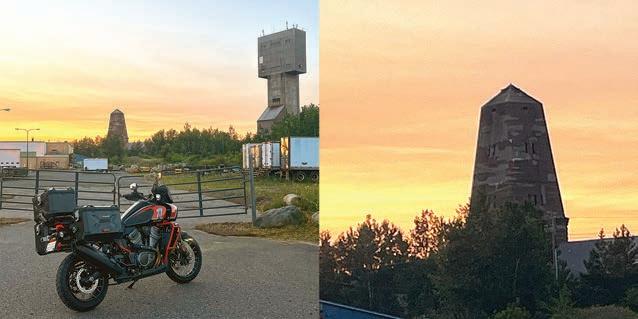
The more I rode this day the more references to iron would I find. Oh, and the world’s largest corkscrew, giant arrows shot into a hill, and all sorts of other giant roadside attractions.
Although Shira would argue – I do not stop at all of these – just the good ones –like Sasquatch being spotted at a bowling alley on 4-1-2017.
April 1st? It could happen.
The Harley and I crossed into Michigan and then spun back north towards Superior, I began to wonder when I’d lose an hour heading east and, about twenty miles later, almost on cue, I crossed into the eastern time zone.
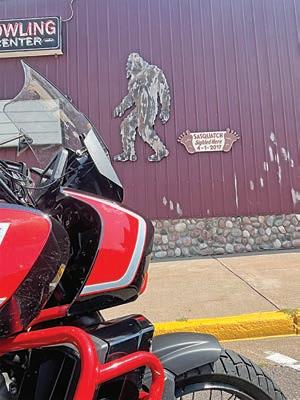
I made a U-turn 100 feet to capture the moment, and realized the sign, in the western direction for ‘Central Time’ was about 1/8 of a mile down the road. Okay, so where does this spit of pavement live? The land that time forgot? The clock on the Harley was blinking a question mark.

Alright, that is an embellishment.
I picked up Route 41 and the road began to get more interesting with the pavement following the small hills, lakes, and ravines.
I was now very deep into Michigan Iron Country, and by evening I rolled into the town of Ishpeming, with their mine operations that look like a set from Star Gate dominating the town for the night.
•
Does anyone know where the love of God goes When the waves turn the minutes to hours?
Gordon Lightfoot
Ishpeming’s iron mining was one of the largest in the nation, and, although the mines have long since closed, they offer tours during the summer. In the winter Ishpeming is the heart of skiing. Skiing along Lake Superior? Yes, and the truth is skiing got its start in the USA in this town, and today the U.S. Ski and Snowboard Hall of Fame is located here. Who knew?

Further east is the Michigan Iron Industry Museum, which was well worth a quick stop too, as even when closed there is plenty to see on the grounds. We all know about the Edmund Fitzgerald disaster from the Gordon Lightfoot song, but this tragedy is part of the story here, and riding along Lake Superior... it was hard to get it off my mind. Over the years more than 30,000 sailors and passengers have died on these lakes.
It is a sad bit on note, and I wondered how the families felt about the song, and read that Gordon went to every family and asked permission to write and record this song before he did anything.
I passed through the part of the lake called Pictured Rocks, where the waves and weather have beat the cliff and formed some of the most stunning rock formations in North America.
I then turned south towards the Mackinaw Bridge. Along the shore of Lake Michigan, I spied the most beautiful ‘Prayer Park’ to my right, built on the shore. “All Welcome,” said the sign. Even me. I stopped, gently said hello to God, and thanked him for a wonderful trip and life. Asked her to take care of our readers and advertisers.


My ride then stayed to the east, along Lake Huron.
I felt a bit closer to home.
I rode down the eastern side of the Lower Peninsula, down between the thumb and the rest of the mitten, the way this part of Michigan has been described.
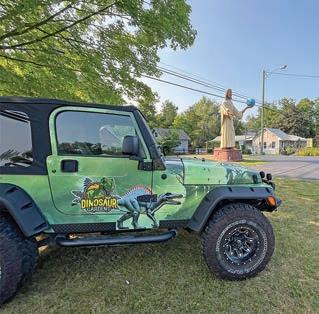
I stopped at a small café for some Michigan Pasties, had a great talk with Michelle, the owner, about her dad and his BMW, and then crossed the 26,500-foot Mackinaw Bridge that connects Michigan’s Upper and Lower Peninsulas.

I ran across Paul and Big Blue a few times, as it seems this titanic two get around faster than I do. Giant roadside statues are an American phenomenon and are part of the roadsides of the nation, but I never expected that a dinosaur park would feature Jesus in such a big way – Creationists and Evolutionists living together. See? There is hope for the world.
I had gotten a good deal down Lake Huron the previous day, and this day I wanted to get around Detroit and make my way into Ohio, and the excellent roads the Buckeye State has to offer – so I did just that, and south of Toledo the fun began.

Especially the advertisers. This part of the lake could be in Cape Cod, with its sand dunes and grasses lining the road.

I love seeing the different town names across this land – but the tiny burg of Brokensword had me turn around for an image. Interesting name for a very mid-west town. Legend states the name is derived from an incident when Colonel William Crawford broke his sword at the creek bank in order to render it useless to Native Americans who were pursuing him. It did not end well for Crawford – but the town adopted the legend.

I stopped by Mid-Ohio Race Track, watching some of the bigger rigs of MotoAmerica, whose series was racing later that weekend, roll in, and then kept heading east, along long, and getting more swoopy, farm roads and ended the day’s long ride in Newcomersville – Birth Place of Baseball pitching great Cy Young.

In the morning I paid my respects to the great baseball pitcher and then followed a route I had made called the CryptoCaper.
During this trek I had been creating routes on BaseCamp and then loading them onto the Harley-Davidson Ride
App – with great success – but out west roads were limited.
Today I was back in the east, and the routing would get more serious and challenging.
This day brought me through Ohio 666 (a long and interesting run), and then onto the famed Triple Nickle -555. Ohio 555 is a superb road in every sense, and you have to read, and anticipate, the road almost all the way. Think very limited sight and a happy roller coaster. By early afternoon I rode up to my next big landmark –the Ohio River. So far I had crossed many – but the big ones that shaped our nation stood out. The Missouri, the
very beginnings of the Mississippi, and now the Ohio.
I crossed over north of Point Pleasant and began Crypto Hunting. Cryptids are not all imaginary, and contrary to popular belief, cryptids don’t even have to be supernatural, mythical, or even all that strange—though many popular creatures acquire these characteristics as their legends grow.
You can believe these or not, but Seymour O’Life taught me years ago “Never let facts and science get in the way of a good yarn!”
In Point Pleasant, I spent some time with The Mothman.

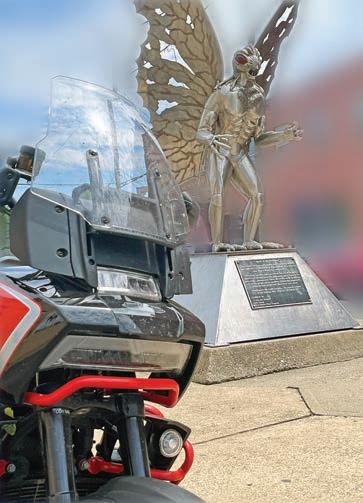


This was very familiar ground for Backroads – and felt like I was back in my part of the world. It felt very good too.
The museum was open, the first time in half a dozen visits over the years, and it was very impressive.
Excellent job here.
I forwent food for lunch and stopped at What’s the Scoop Mothman Ice Cream Shop that Shira had featured last year. What a great play on a local legend.
West Virginia has its share of monsters, and my next stop would notch two more. I ran some of the smaller roads over the mountains and then used the big road around the state capital of Charleston.
My stop for the night was a darling inn in the town of Sutton called the Elk River Hotel & Café, but as I rolled into town I saw one of the two Cryptozoologist Museums was still open and I notched my second monster of the day at the West Virginia Bigfoot Museum.
Speaking of old and mysterious… I knew the Concours Owners Group was having their National Rally just one town north, and I love these guys, so I dropped my gear off at the Elk River and rode over to the rally.



ing her that night at the Inn at Canaan, in Davis, West Virginia.
But before leaving Sutton I had one more beast to bag on my CryptoCaper, and a visit to the Flatwoods Monster Museum was surely in order.
This ‘monster’ is not as well celebrated as the Mothman or Bigfoot, but the story is just as interesting, and the museum is very well put together.
My ride this day brought me along the Cherry River on a neat backroad, and then through Greenbrier and Pocahontas Counties.
I spent some time at the Cranberry Mountain Nature Center, which really was an outstanding stop on the Appalachian Highway. By this time the sky was moody – tossing sun, and then rain my way.
In Marlington I picked up Route 219 heading north. This is one of my favorite pieces of pavement in the United States, and it is always a pleasure to ride, and the Pan America was especially fun on this twisty asphalt. Pop this bike into Sport-mode and all 150 ponies are unbridled. The suspension keeps everything planted, and this world-class adventure machine takes on a sport-like quality.

So good to see long-time riding friends. If hanging with the Mothman felt like old times, hanging with all the COG folk brought it home - in a very real sense. Their speaker for the night, Kirsten Talken-Spaulding, looked so familiar to me, then in her most excellent talk on the National Park Service she spoke of riding to Mexico and had some images on a screen. Familiar images to me. Then I realized they were familiar to me because I shot them back 17 years ago when Shira and I had ridden to Mexico with Morton’s BMW, and Pancho Villa Tours. It was nice to see her again, and all my COG friends.

Catching up with her was great and one of those rider moments you talk about 20 years down the road.
This was a solo tour for me – a rarity - but the previous day Shira had packed up her Suzuki V-Strom and started south, overnighting in the familiar and friendly confines of Shippensburg, PA. This day she would meander south, and I would meander north. I was very much looking forward to see-
In Elkins, I turned east over Cheat Mountain, and then north towards the Canaan Valley, which at 3,200 feet always seems to be a most pleasant place to end a ride – especially one like this.
As I fueled up at the station opposite the Inn I spied Shira, reading a Reacher novel on the porch.
So good to see her smile, and the hugs and kisses were worth every mile. Man, it was good to have her back with me.
At this point our intrepid hero in this story (that would be me) turns his head toward you readers, smiles a grin that would make Jimmy Buffett proud.
He gives you a nod and a wink, and the story fades to black… The End. Till next time. ,

Edelweiss Bike Travel has released its highly anticipated travel program for 2025/26. Featuring a variety of exciting new destinations and classic tours, this diverse lineup is set to captivate motorcycle enthusiasts and adventurers alike. With a focus on delivering unforgettable experiences, the new program includes fresh routes in China, Mongolia, Spain, and Eu rope’s most scenic regions, as well as Destination Yamaha tours in Europe. Their Mystery Tour returns for 2025, where participants won’t know their destination until the journey begins.
Edelweiss Bike Travel is offering an exclusive ear ly bird discount of $250 or 200€* on guided European tours booked by October 31, 2024. This offer applies to new online bookings from the standard program, and customers need only use the booking code EBB2025 to enjoy the discount.
(*Valid for new online bookings of guided tours in Europe in 2025 from the standard Edelweiss pro gram until 10/31/24. Not valid for motorcycle rentals or
self-guided tours. The amount will be deducted automatically. No cash redemption possible.)
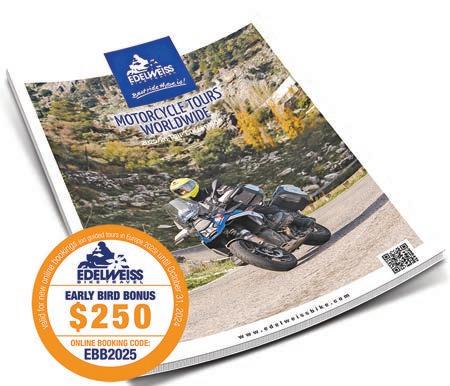
In addition to the exciting new motorcycle tours, Edelweiss Bike Travel is also proud to announce the launch of its new e-bike catalog for 2025/26. This catalog features a variety of guided e-bike tours across Europe, perfect for those looking to enjoy a scenic and relaxed journey. As with the motorcycle tours, the $250 or 200€* early bird discount is available for all guided e-bike tours in Europe in 2025 booked by October 31, 2024, using the booking code EB2025. Whether on a motorcycle or an e-bike, Edelweiss invites adventurers to experience the thrill of travel in a whole new way.
You can request a free print or digital copy at www.edelweissbike.com
For more information, inquiries, or to book a tour, Edelweiss Bike Travel is available via email at worldtours@edelweissbike.com or by phone at +43 5264 5690.



Usually you will find ADV machines like our BMW R 1250 GS shod with more adventurous tires – bigger, blocky, even knobs.
But most owners of these machines rarely need tires along this line – well, until you do – but knowing most of the miles on my GS would be on a tour of the north and mid-west this early part of the summer – I chose to put on a set of Dunlop RoadSmart IV. The thought being I would be avoiding any roads that were not paved.
That got squashed the first night out on a mud-soaked hill leading into Bethel Woods… since then it has seen some light gravel work, but nothing anywhere BDR’ish, and all was well, but on the pavement these tires truly excel.
These tires are designed for sport touring machines, and what is the GS if not a big fugly sport tourer?
I had run Dunlop’s RoadSmart III a few years back, adding in two hard track days, along with thousands of sure-footed miles.
Dunlop still makes the III, but the newer IVs have raised the bar with higher performance through the life of the tire, which now offer an additional 26 percent more miles than the III -with a claimed range of more than 12,000 miles.
Numbers from tire companies always make me won der, as I habitually run my tires on the lighter side of what is called for – preferring traction over miles, but I have a bit over 5,000 on these tires and I would not think twice about a light track day with them, right now.
These RoadSmart IVs are impressive.
According to Dunlop, who know far more about rubber alchemy and grip sorcery than I...
The RSIV is a completely new tire with new tread patterns, construction, and profiles. Both front and rear tire profiles are changed significantly, resulting in 15% lighter steering on turn-in with more linear response. On backroads especially, the RSIV makes it easier to set up a turn, and the steering is more consistent from upright to full lean for more precise rider feedback. Another benefit: lighter steering decreases rider fatigue so you can stay sharper longer.

The new tread patterns work in harmony with the new profiles, improving tread wear, grip, and handling (especially in wet conditions). The RSIV’s optimized groove angles and strengthening of its tread rigidity through strategically placed thinner tread grooves contribute to more even wear across the life of the tire, while maintaining superior wet-weather performance.
In the wet Dunlops utilize their Hi Silica X, a new technology that increases the silica content in the tread. This new compounding technique improves silica dispersion to improve the overall flexibility and resilience of the compound, enhancing road adhesion for even better wet grip performance.
Backroads is known for our uncanny ability to attract precipitation.
Note my track days are more about getting smooth than any thought of being a racer boy.

The Dunlop RoadSmart IV are very confidence-inspiring regardless of what Mother Nature tossed my way.
There was no snow, sorry.

Mileage-wise the RoadSmart IVs run three different compounds on these tires layered vertically. The top layer features Dunlop’s MT Multi-Tread™ technology that’s made up of two compounds split into three sections (the center compound is designed for high mileage while the side compounds are designed for lateral grip), plus a third base layer compound that efficiently converts energy into heat below the surface. Sorcery.
The new tread pattern seems to do everything Dunlop promises and the addition of Fine carbon is utilized in the RSIV due to its smaller particle size. It increases the bonding points with polymers at the molecular level to aid in improved grip, and help the tire heat up more effectively. Additionally, Fine Carbon helps reinforce the compound, greatly enhancing the tire’s mileage.
For me, the Dunlop RoadSmart IV tires did the job, but I will probably go back to a more ADV-style tire… but I am not sure when that will be – these tires still look great and why would I get rid of a good thing?
The Dunlop RoadSmart Tires are available for most sport touring and ADV machines. Check your dealer or Dunlop’s website at www.dunlopmotorcycletires.com for more information.
When venturing far from the trailhead it’s critical to carry the right tools to get you back in case of a breakdown. Most universal tool kits are bulky and heavy and still lack the specialty tools you need for a specific bike type. Compact multitools don’t contain everything you need and can be awkward to use. The Switchback™ tool kit from CruzTOOLS is the perfect solution. It’s compact, lightweight, and built specifically for trail-side repairs and adjustments on your Japanese dirt bike. Sized to fit in a tail bag, enduro jacket

or pack, the Switchback weighs in at only 1.7 pounds. The combination wrenches are full-sized, and the collapsible T-handle driver makes for fast work turning sockets and hex bits. The kit also includes a 5-in-1 screwdriver, pliers, mechanic’s wire, cable ties and a durable zip up pouch. All tools come with a lifetime warranty – no questions asked.
The Switchback tool kit is a great fit for all modern Honda, Yamaha, Kawasaki and Suzuki enduro, dual-sport, woods, and MX motorcycles. If you run

tubes, you’ll want to add an axle wrench and tire levers. 2-stroke owners should add a plug wrench. Compact at 2”



When Harley-Davidson announced their Pan America model a few years back I was, as a long-time owner of multiple BMW GS bikes, understandably intrigued.
Hearing about it, and then seeing the actual machine just upped my curiosity.
Could the largest maker of V-Twin cruiser machines, a legendary marque that has the greatest following of any motorcycle manufacturer on the planet, dive into the ever-deepening pool of the adventure motorcycle market; and if it did, would it swim?
For 2024 The Motor Company has added a CVO version of the Pan America to their showrooms.
For those who are not H-D savvy – CVO, or Custom Vehicle Operations, is the upper echelon of H-D designers. They are like Harley’s Skunk Works –Lockheed-Martin makes jets, and their Skunk Works makes magic.
The bike is certainly loaded with amenities, and the CVO version comes with just about everything Harley offers the buyer of the standard Pan America.
Key fob stowed safely away, I fired up the big black & orange CVO, taking in the bike’s styling that followed some of the key Harley elements, yet also looked like a formidable ADV machine. The blunt nose was a bit of a standout. My first impression was not all that favorable – but that would change over the next few weeks. I thought of the actress Claudia Doumit – a pretty woman, but it’s her nose that makes her alluring; and on that note it took a while to like the GS front end too. What stands out in the beginning, perhaps be-
comes endearing later on; like Alfalfa’s personality.
I won’t rehash the entire three weeks on the road – it all starts on page 24. But I want to highlight the different aspects, features and feel of the Pan America CVO, the good, bad, and questionable, and save my final thought for the final paragraph…
I assumed this machine was going to be and feel heavy, but this was not the case, as my first time taking a seat on this bike was when I put it into first and rolled out into very busy Sturgis Rally traffic.
All machines take a little bit of time to settle into, and the Pan America was no different, and Route 14A heading into Sturgis itself is a twisty mountain road, and I had to get comfortable and pay attention at the same time. Once settled onto the bike I found it to be nimble, and rock steady through the twisties. In traffic, the Pan America was comfortable and easy to ride. I stopped for a bit and ran into one of the few things I would find fault with – the bike’s sidestand.

I rode downtown to take in a bit of the Sturgis Rally vibe, and when I went to put the bike on the stand, I was less than confident. In my mind the thousands of seasoned Harley riders all stopped what they were doing and the collective eye of The Motor Company’s faithful watched… waiting for me to drop the Pan America, and see this bike topple to the pavement. It did not. But I was still not sure and kept waiting to hear a crash that would never come.
I learned to trust the sidestand, but I would never like it.


With the vibe fully sated, I headed out a bit to explore some of the Black Hills and start to vector east.
Comfort-wise the Pan America is ultra-comfortable. The CVO comes with some serious suspension, a 47mm inverted fork with electronically adjustable semi-active front and rear suspension that will adjust damping taking into consideration a wide number of variables – speed, acceleration, lean angle, and braking. This model also comes with Harley’s Adaptive Ride Height which lowers the bike’s height when stopped and maintains the optimum suspension sag by monitoring conditions. In town it made for confident and easy stops and starts – and if you are a shorter rider this will be a huge bonus.
The sitting position is like most ADV machines, with that sit-up puppy dog begging position. – which has worked for me for decades.
I was asked, about 1,000 miles into this trip, what I thought about the Pan America’s saddle. The truth is… I had never thought about it at all. Not even thinking about a motorcycle’s saddle after a few 300+ mile days says it all.
The Pan American CVO probably rides with the best stock factory saddle I have ever sat on. Bravo Milwaukee.
The machine is powered by Harley’s Revolution Max 1250 engine, a

150-horsepower, liquid-cooled powerplant, with Variable Valve Timing. Not the Harley engine I grew up with.
The bike has a number of power modes – Rain, Road, Sport – two OffRoad modes and two Customizable Modes.
All of these do exactly what they were designed for… but it was not long before I was running my own ‘Custom Mode’ with lots of engine braking, 150 ponies and still keeping Cornering Enhanced Traction Control and ABS. These are controlled by a 6-axis Inertial Measurement Unit (IMU) to measure its motion and orientation in three-dimensional space. This device combines accelerometers and gyroscopes to provide precise data on acceleration and rotation.
Some say that is math – I say magic.
The Revolution Max engine comes with a quick-shift 6-speed transmission that also was almost as comfortable to use as the saddle was to sit. Smooth, sure, never missed a shift – and just a happy joy, especially when some seri-

ous sport riding became available. On that note, the Screamin’ Eagle Quick Shift is also incredibly smooth – unlike other “quick shifts” I have tried. Power is sent to the rear wheel via a traditional drive chain. This had one or two riders saying they would prefer a drive shaft, but I have no problem with tradition.
The bike starts with an uncharacteristic characteristic growl – not so much the deep potato/potato soundtrack that we are accustomed to, and this engine is quick to respond when the throttle is twisted and goes all the way to the 9,000 rpm redline.
Brembo calipers handle the stopping with the usual Brembo style and ease, and for me, Brembo Brakes always add a bit of gravitas to any machine.
All this comes together on a steel trellis frame with a one-piece cast aluminum swingarm – that looks like it was lifted from a Superbike.
The CVO comes with engine guards, and all these are color-matched to the orange trellis frame.
The CVO has a large 6.8-inch color TFT touchscreen that feeds you all sorts of information – and all controlled by the switchgear on the handlebars.
There are a lot of buttons and lots of screens to open and close. All

of these become somewhat intuitive, but at night the lack of backlighting on these controls was a bit problematic, and I hope Harley addresses that.
It took a few days but I became accustomed to most of them – I think.
The bike uses your Smartphone and the Harley App to keep you in the loop. Mapping, and music, all work with the phone.
I watched a few videos one night, sitting under a waxing moon along the Missouri River with the Pan America parked almost in the lobby so I could grab a strong wi-fi. I watch a video from a Pan America rider in Texas (Jimmy the Bearded Biker - thank you!) who has a wonderful grasp on how all this worked and could actually explain it so a guy from New Jersey could understand.
Soon I was creating my own GPX Routes and uploading them to my H-D Account and that would go to the Cloud, then my phone then to the TFT screen. It all worked seamlessly, brilliantly, and happily, 80% of the time.
But, when it stopped working, there were a lot of colorful metaphors screamed in my Schuberth. This would usually happen at the worst and key parts of the day’s planned ride.
If I owned this bike a Garmin XT would be the first thing I would add. The music and everything else were as brilliant as the TFT screen… but I need my GPS to be 100% when boldly going to places this man has never gone before. Perhaps Harley’s app will evolve and become more trusted –they are very close, and updates happen.
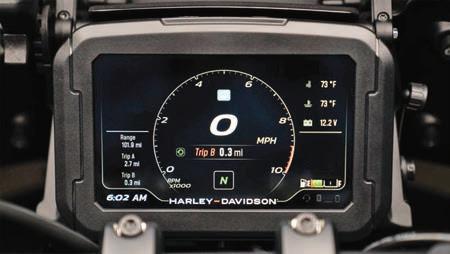

Music, machine information and the like all worked as created, and pairing my Cardo to the Harley was seamless, and remarkably easy. Scrolling through information, song titles, routes, and everything else the TFT would show was very simple, and never took away from my roadcraft.
All 2024 Pan Americas have a new upgraded charging capacity that increased the charging system output at idle by 14% over previous model years and a larger battery capacity goes from 12 Ah to 17.5 Ah.
The heated grips, standard on the CVO, were a bit disappointing, and never seemed to get past very warm. The 11-

inch dark shield available on the CVO, easily hand-adjustable did well in blocking wind and letting my visor remained open even on the Interstate behind big trucks at non-east coast speeds. The stock unit is 4.5 inches taller – and this might be a better option for long tours.
It should be mentioned that the bike’s key fob is security-driven… and the bike will start flashing its signal lights, beep and then sound an alarm if it is moved or raised off the side stand without the fob being present.
All my gear was stowed in the Pan America CVO’s SW-Motech-designed aluminum cases. They were very water-tight, easy to operate, and seem to be the standard for the industry these days.
The bike also came with an aluminum skid plate and rolled on tubeless laced wheels (optional on the standard model).
The CVO comes standard with Harley’s Advanced Daymaker Adaptive LED headlight, which uses the IMU to determine lean angle. The lights are stellar, and very bright and accidentally leaving the brights on got numerous rebukes from semis, and cars coming the other way. Oops, sorry – my bad.
The tail/brake light was nowhere near as impressive as the front of the bike, and an additional tail/brake light would be an immediate upgrade.
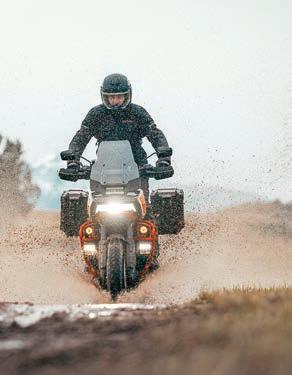
I did get to ride a bunch of miles of gravel roads, some more severe than others, and the machine was steady and stable and handled far better than its big road-worthy looks would have you believe. I had missed out on a South Dakota dual sport ride earlier in the week, and with more aggressive tires it would have easily ridden along the small baby heads leading to the Center of the United States, just north of Belle Fourche, South Dakota, and later in the Sioux Nation.
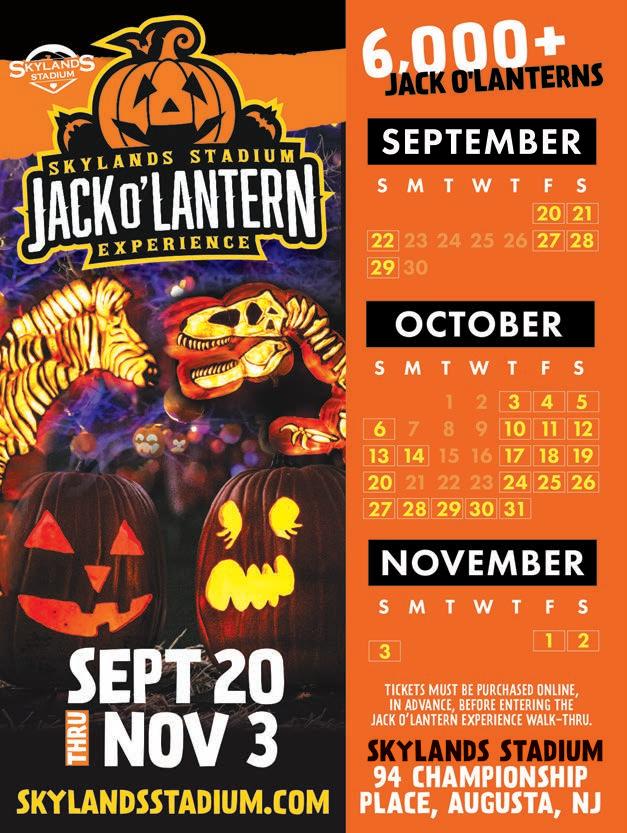
Three weeks and a bit more I had ridden in 21 states in 21 days.
I found the Harley-Davidson Pan America CVO to be far more brilliant than I had anticipated.
Harley-Davidson went to school when designing this bike. They saw what was out there, designed from there, and found a way up to the front row of the class.
I asked if they would sink or swim. Well, they are doing laps.
ADV machines must be like a baseball team’s utility player, and be able to cover all the positions – and pitch if asked.
These machines, although more capable than you think off-road – especially in talented hands - are really going to be sold to riders who will spend most of the time backroad touring, and making long high-mileage trips.
The Pan America CVO excels at this.
The Pan America CVO is a solid machine all-around machine and covers ground in a strong, stable, and fun way, whether in town, down the backroads, or two-track if asked.
It is very easy to ride, and fall in like with; when it came time to return it, I was having impure thoughts.
In my barn, I looked at the two big ADV machines parked next to each other. The Pan America CVO looked like a very healthy corn and beef-raised Wisconsin gal. My GS – like a hot Berlin Hooker.
Oh dear, life is all about choices – and the Bavarian hooker had just one payment left and she’d be all mine.
But, to have the Pan America even stir these questions in my mind tells you a lot.
To me, motorcycles fall into three categories. Work, Play, and Art.
The Pan America would definitely be a work machine, and my litmus test for such bikes is simple… if I was told at the beginning of the next season that my go-to Backroads bike for the summer would be the Harley-Davidson Pan America CVO? Well, that would be okay with me – at least I had her for one long and fun month. ,


The Law Office of Paul Gargiulo, P.C. presents
When helP can’t helP! SometimeSthe Calvary iS Not ComiNg
July 10, 2024 - DEATH VALLEY, Calif. – A motorcyclist died on Saturday after riding through Death Valley National Park when the high was 128 degrees.
A group of motorcyclists riding through the park on Saturday were treated for severe heat illness, two were taken for advanced medical care in Las Vegas, and a third died from heat exposure near Badwater Basin, according to the National Park Service.
Four other riders were treated onsite and released.
According to the NPS, due to the record high of 128 degrees, emergency medical flight helicopters were unable to respond because of the extreme heat. When temperatures exceed 120 degrees Fahrenheit, a medical helicopter cannot access the park. Air expands when it is heated, becoming thinner than cold air.
So, helicopters can’t get the lift needed to fly.
That was the news flash that popped up on my desktop on a Wednesday morning in early July.
This was so sad to hear, and although it might be easy to ask why some riders would put themselves in this situation, as riders we know that sometimes we don’t ride into a situation, but the situation rides into us.

parks throughout the U.S. this summer, helicopter crews have had to wait for nightfall and cooler temperatures to get off the ground.
Starting to think a high-altitude hike would be a better option for rescue if things go wrong? Think again. Low-elevation parks aren’t the only ones suffering from the heat-grounded helicopters epidemic. That’s because the insufficient-lift issue compounds at higher altitudes where the air is already thin, says Byrod, whose division serves several peaks that top 11,000 or 12,000 feet.
“Sixty-five degrees is really hot for those altitudes. At that temperature, the aircraft is going to be really sluggish. You’re going to have reduced performance,” he explains.

Still, there is a point when you must be open to your options.
The last time we were in Badwater it was quite the opposite. At least 100 degrees cooler – and dealing with sand, snow, and wind all at the same time. It was not a good situation, and as soon as we could, like Bob Dylan sang, we sought shelter from the storm.
Humans live in a “Goldilocks Zone.”
Too much on either side of this and we begin to suffer; and so do the men and women that are paid to help.
So Hot That Help Can’t Help…
If temps top 120°F in Death Valley, for example, rescue personnel are required to take a 50-minute cool-off break for every 10 minutes they spend outside. That makes it tough to get a hiker out of trouble in a timely manner. In the Grand Canyon, helicopter rescue is sometimes the only option when a medical emergency occurs in the canyon bottom.
“Even in good weather conditions, trying to carry someone out from a point just three miles into the canyon is almost beyond our ability,” says Fitzgerald. “It’s brutal.” Carrying the litter uphill in that kind of terrain is so difficult that it can require at least 16 rescuers to take turns
Helicopters are not an option:
“When air is heated, it expands, so it’s thinner than air that’s cold,” explains Brian Byrod, a helicopter pilot for California Highway Patrol which responds to hiker emergencies throughout the Sacramento Area and Lake Tahoe. When air is thin, helicopters can’t get the lift they need to fly. In
Hotter than that, and the chopper might not be able to fly at all. In 2007, an experienced pilot crashed in Washington State after taking off from about 5,000 feet in 70-degree temperatures. The diagnosis: The air was too thin for the pilot to maintain control of the aircraft.
Hundreds of years ago sailors, and travelers got caught flatfooted all the time. In World War 2 Admiral Halsey’s Fleet was waylaid by a typhoon in the Pacific. The storm sank three destroyers, killed 790 sailors, damaged 9 other warships, and swept dozens of aircraft overboard off their aircraft carriers. Although they knew it was coming- it did not change Halsey’s plans – and our fleet paid for this. There was no Calvary – they were the Calvary! (Army / Navy Game not withstanding)
Pay attention to the weather – your phone’s app may save you from a lot of grief. ,



